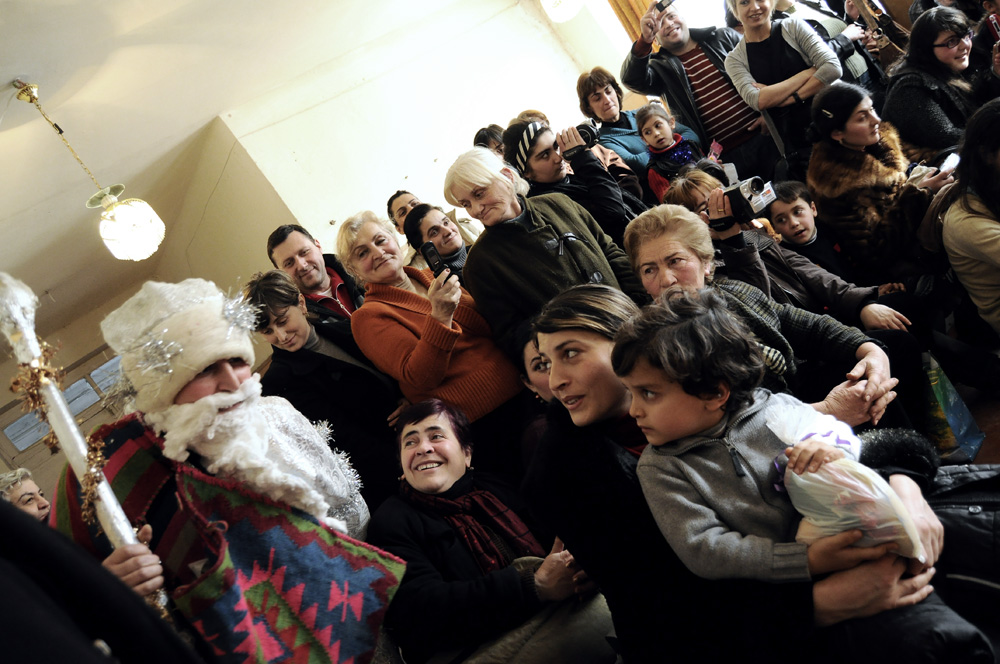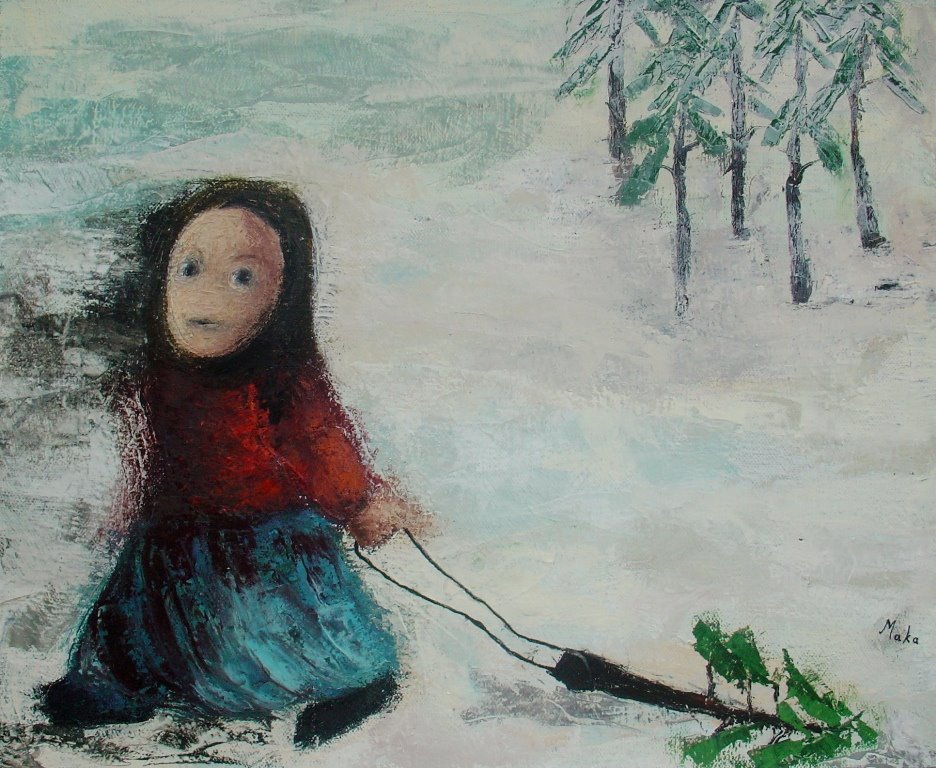 I wish you all a Happy New Year & recommend all a poetical view of the life like Makas Paintings!!! It is more than a cold comfort in periods of crisis! Cheers, Ralph
I wish you all a Happy New Year & recommend all a poetical view of the life like Makas Paintings!!! It is more than a cold comfort in periods of crisis! Cheers, Ralph
Thursday, December 31, 2009
ART: Shoba. by Maka Batiashvili (maka.batiashvili.net)
 I wish you all a Happy New Year & recommend all a poetical view of the life like Makas Paintings!!! It is more than a cold comfort in periods of crisis! Cheers, Ralph
I wish you all a Happy New Year & recommend all a poetical view of the life like Makas Paintings!!! It is more than a cold comfort in periods of crisis! Cheers, Ralph
Wednesday, December 30, 2009
ARTIKEL: "Himmelschreiende Armut“ in Gymri. Von Michael Länge (gmuender-tagespost.de)
Pfarrer Scheide ist nach jüngstem Besuch in Nordarmenien entsetzt über Zustände und Untätigkeit des Staates
Seit mehr als fünf Jahren unterstützt die „Küche der Barmherzigkeit“ die Straßenkinder von Gymri. Eine Verbesserung sieht Pfarrer Karl-Heinz Scheide in diesen Jahren nicht. Im Gegenteil: „Was ich in Gymri erlebe, ist das Bedrückendste“, sagt er nach seinem jüngsten Besuch vor wenigen Wochen. Und ergänzt: „Ein Ausmaß an himmelschreiender Armut und Ungerechtigkeit, die ich in Armenien so noch nicht gesehen habe.“
Der ganze Artikel >>>
Info Spenden für die "Küche der Barmherzigkeit" können auf das Konto 440 752 987 bei der Kreissparkasse Ostalb (BLZ 614 500 50) einbezahlt werden.
Seit mehr als fünf Jahren unterstützt die „Küche der Barmherzigkeit“ die Straßenkinder von Gymri. Eine Verbesserung sieht Pfarrer Karl-Heinz Scheide in diesen Jahren nicht. Im Gegenteil: „Was ich in Gymri erlebe, ist das Bedrückendste“, sagt er nach seinem jüngsten Besuch vor wenigen Wochen. Und ergänzt: „Ein Ausmaß an himmelschreiender Armut und Ungerechtigkeit, die ich in Armenien so noch nicht gesehen habe.“
Der ganze Artikel >>>
Info Spenden für die "Küche der Barmherzigkeit" können auf das Konto 440 752 987 bei der Kreissparkasse Ostalb (BLZ 614 500 50) einbezahlt werden.
Labels:
Armenia,
Armenian,
Development,
Gyumri,
Policy,
South-Caucasus
ARTIKEL Weihnachten in Georgien. (tlz.de)
Wolfgang Hirsch hat mit dem Starbariton George Gagnidze gesprochen.
Vor Weihnachten wird in Georgien gefastet. Die Fastenzeit hat am 28. November begonnen. Verzichtet wird dann auf Fleisch und auf Milchprodukte. Jedoch am Weihnachtstag, da biegt sich die Tafel - die Weihnachtssupra. Wer schon mal zu Gast in Georgien eingeladen war, kennt das ja zur Genüge. "Ohne Saziwi, das traditionelle Festmahl, geht es nicht", erklärt Maja Gagnidze mit genüsslichem Lächeln, und ihrem Mann George läuft beim Gedanken daran sichtlich das Wasser im Munde zusammen. Jedoch auch jetzt noch, müssen die Georgier auf Heilige Abend ist warten. Erst am 6. Januar (Dreikönigstag) wird das orthodoxe Weihnachtsfest begangen. Maja wird dann tags darauf Saziwi kochen.
Georgische Rezepte auf sarkartwelo.de >>>
Georgische rezepte auf georgienseite.de >>>
Vor Weihnachten wird in Georgien gefastet. Die Fastenzeit hat am 28. November begonnen. Verzichtet wird dann auf Fleisch und auf Milchprodukte. Jedoch am Weihnachtstag, da biegt sich die Tafel - die Weihnachtssupra. Wer schon mal zu Gast in Georgien eingeladen war, kennt das ja zur Genüge. "Ohne Saziwi, das traditionelle Festmahl, geht es nicht", erklärt Maja Gagnidze mit genüsslichem Lächeln, und ihrem Mann George läuft beim Gedanken daran sichtlich das Wasser im Munde zusammen. Jedoch auch jetzt noch, müssen die Georgier auf Heilige Abend ist warten. Erst am 6. Januar (Dreikönigstag) wird das orthodoxe Weihnachtsfest begangen. Maja wird dann tags darauf Saziwi kochen.
In der georgischen Heimat wird Weihnachtsschmuck traditionell erst zum 6. Januar aufgehängt, berichtet Maja. Auch geschenkreiche Bescherungen, gar all die Kommerzialisierung des Christfestes, kannte man dort nicht. Erst seit wenigen Jahren werden im Zuge der Globalisierung, zumindest in den Städten, die alten Bräuche allmählich aufgeweicht.Der ganze Artikel >>>
[...]
Saziwi zum Beispiel bereitet Maja mit Putenfleisch zu, die alles entscheidende Walnuss-Soße wird mit Koriander und Safran abgerundet. Eigentlich, merkt Maja an, kochen in Georgien das Weihnachtsmenü ja die Männer, aber George - "keine Zeit", hebt er abwehrend die Hände - ist möglicherweise besser im Essen.
Und dann all die Süßigkeiten! Tschurtschela zum Beispiel. Das sind Hasel- oder Walnüsse, die, an Bindfäden aufgereiht, in einen heißen Sud aus mit Maismehl angedickten Traubensaft getaucht werden. "Das macht die Großmutter immer am besten", verrät Maja, und George verdreht die Augen: "Sehr lecker!" Oder Gosinaki, gehackte Walnüsse, in der Pfanne mit Honig karamelisiert. Oder Nasuki, ein süßes Brot mit Rosinen.
Das Besondere daran ist, dass man einander in Georgien zum Fest keine großartigen Präsente überreicht, außer vielleicht ein bisschen Spielzeug für die Kinder. "Sondern man schenkt Süßigkeiten", erklärt George Gagnidze, "das ist Tradition."
Selbstverständlich findet sich dazu dann die ganze Familie ein, alle Onkels und Tanten, man singt und lacht und verbringt eine festlich-fröhliche Zeit zusammen. Weihnachtslieder? Aber sicher, sagt Gagnidze, georgische wie auch deutsche. Da wandert die Familie musikalisch zwischen den Welten, vor allem Töchterchen Maria ist mit dem deutschen Repertoire vertraut, wenngleich ihr Vater während der Studienzeit auch Bachs Weihnachtsoratorium und Händels "Messias" mitgesungen hat.
Die festliche Verheißung aber beruht im Gemeinsinn der Großfamilie, vereint in Glauben und Brauchtum. Zwei Wochen lang können die Gagnidzes sich noch darauf freuen; dann endlich ist, gemäß altem julianischen Kalender, der Heilige Abend.
Georgische Rezepte auf sarkartwelo.de >>>
Georgische rezepte auf georgienseite.de >>>
Labels:
Food and Wine,
George Gagnidze,
Georgian,
Germany,
Music,
Recipes,
Weimar
Monday, December 28, 2009
PHOTOGRAPHY: Party at kinder garden, Georgia, Rustavi. By Gela Bedianashvili (flickr.com)
Labels:
Children,
Georgia,
Photographer,
Photography,
Rustavi
TEXT: RUINS OF OUR TIMES. By Joanna Warsza / Laura Palmer Foundation / Warsaw
The text will be published in Team Network magazine and in Obieg on-line.
Georgia and Armenia are full of landscapes of frozen moments. With the fall of the Communist regime, the trains stopped n mid-route, the cable car over one of the cnyons of Tbilisi has been abandoned halfway, and the housing estates of the never realized future found temporary settlers. Tracing the unwanted heritage of the Soviet past in the Caucasus, at times I had a strange sense of witnessing the future. The self-organized methods adopted in the years of post-collapse crises recall the most progressive contemporary theories of bottom-up structures and participatory urban planning: the cinema-theater Rossia in the middle of Yerevan found a secondary use as a market and mini-bus station, the never completed city of Gyumri in Armenia was finished by the motivated settlers themselves, the mikro-raion estates in Tbilisi have expanded with new parasite parts called kamikaze loggias. The Caucasus, following a process of Eastern Bloc Westernization, is fortunately still full of heterotopias, stunning ruins of our own age, and of self-organizing policies that tend to be forgotten in a time of ‘euroremonts’, and ‘Eurenovations.’
 Ruines of the future, never accomplished project builidng, Mush, Armenia
Ruines of the future, never accomplished project builidng, Mush, Armenia
FROZEN MOMENTS
On the western outskirts of Tbilisi one encounters a thrilling Caucasian picture. A cable-car supposed to link the unfinished University campus with the metro station was stopped at the very second the Soviet system collapsed in 1991. Since then it has been hanging in the air over a picturesque canyon, abandoned in the middle of its route, above the heads of people passing down in the valley who no longer even notice it. The Caucasus, with its tremendous landscapes, is full of this phantom heritage, when the Socialist reality became the past, when the world stopped and started again.
Coming myself from a post-Communist (though not post-Soviet country), I have been witnessing since 1989 how quickly the former Eastern Bloc, and Poland in particular, has been cleaning up its past. Westernization, pro-euroatlanticism and procapitalism (‘once Moscow, Brussels today’ policy), have become the new and only format for life. Georgians and Armenians have a good term for this phenomenon — the euroremont (‘eurenovation’). The Poles have performed especially well: we still live in the same housing blocks, but they were immediately repainted and wrapped in polystyrene, the streets were filled with endless early-capitalist vendor kiosks, and later with huge billboards and all sorts of advertising campaigns. Social Realist architecture in the big cities was quickly transformed, covered up, or lifted in order to be a part of a new narrative.
One of the very few examples of Polish Socialist Realist decay was the 10th-Anniversary Stadium in Warsaw. Built in 1955 from the rubble of a war-devastated city, it was to preserve Communism’s good name for forty years. In the early 1990s it fell into ruin, being at the same time “revived” by the Vietnamese intelligentsia and Russian traders, pioneers of capitalism, who established an open-air market. It became the only multicultural site in the city, a storehouse of biographies and urban legends, a piece of Land Art, a workcamp for anthropologists, botanists and archaeologists. It was in fact the one and only heterotopic zone in central Warsaw, free from the unwritten laws of westernisation and euroremonts.
KAMIKAZE LOGGIAS AND SELF-ORGANISED MICRORAYONS
The Georgian and Armenian situation was different. The Russians went home, but left behind their utopian infrastructures in the former republics. People started organically responding to the changes through a particular, self-organised relationship to the architecture. A refusal of the dominant structures, the provisional liberty, and scepticism as to all master plans led to participatory forms in the urban environment. Emergent movements started to occur, especially in the “microrayons” — the large-scale social-housing projects developed throughout the entire former Soviet Union, as well as in Vietnam and in Eastern Europe. A “microrayon”, or microdistrict, was initially supposed to be a self-sufficient unit affording its inhabitants comfort and the pleasure of living, thus realising Le Corbusier’s utopia of the collectivity and harmonious cohabitation through architectural and social engineering. If this happened it was not through a masterplan, but initiatives from the bottom-up.
At the beginning of the 1990s many owners of a block apartment would hire an engineer to design an extension to their home. This whole new parasite part, called a kamikaze loggia, would grow out one side of the building, expanding the living space. This was nothing new for Georgia; palimpsest structures and extensions have always been a commonly applied method of expanding a living surface in this country located on steep Caucasian slopes. One has to remember that Georgia was the “honey of the USSR” — the richest state, with quite oversized and representational houses. In the dark and poor Shevardnadze years after the fall of Communism, the extensions continued, even using found scrapmetal or other cheap materials of all kinds.
 THE NON-EXISTENT MINISTRY OF A NON-EXISTENT COUNTRY
THE NON-EXISTENT MINISTRY OF A NON-EXISTENT COUNTRY
The Georgian palimpsest spirit is perhaps best reflected in an icon of Caucasian architecture, the former Georgian Ministry of Highways, (საქართველოს საავტომობილო გზების სამინისტროს შენობა) built in 1975 by architect George Chakhava, since last few years bought by a bank and standing empty, overgrown with vegetation. This fascinating building was meant to stand in harmony with the mountain villages. The structure consists of a monumental grid of interlocking concrete forms, five horizontal parts of two storeys each seeming to stand on top of each other.
The design is a reference to the concept of Ville Spatiale by Yona Friedman, who didn’t want to displace the city, but to raise a second city twenty meters above the existing one. Chakhava’s other reference was also a forest, with the cores as the trunk and the horizontal parts as the crowns, so as to provide a lot of free space for other living beings and nature. The former Ministry on Gagarin street also brings to mind the work of the Japanese Metabolists, whose flexible, and expandable structures built in the 1960s evoked processes of organic growth. With its unrealistic and multi-extensional structure, the building seems to be an unintended tribute to the most recent, early-capitalist architectural changes in the urban environment of Tbilisi, but carrying a long tradition of self-built palimpsests.
BACK TO THE FUTURE
Staying for two months in Georgia I sometimes had a strange sense of witnessing the future. The self-organized methods adopted in the years of crises after the collapse of the USSR recall the most progressive contemporary theories of bottomup structures and participatory urban planning. The Chilean architect and theoretician Alejandro Aravena created Elemental, a “do-tank” combining art, architecture and engineering, understanding the city to be a resource for building social equity. His statements, considered visionary, about buying half a house and filling the other half with years, are a kind of selffulfilling prophecy in Caucasus. People don’t ask themselves the developer-like question, “Where would you like to live?” but rather how to organize the city from its successive layers.
A project awarded a Golden Lion at the last Venice Architecture Biennale, The Afterlife of Buildings by Grzegorz Piatek and Jarosław Trybus, pictured an apocalyptic secondary use for famous Polish properties: a Warsaw airport terminal would be turned into a chicken farm, a Norman Foster building into a prison, or a financial centre into a crematory. Applying both theories the Caucasus could move ahead, full of secondary uses. One could cite the Yerevan cinema-theatre Rossia, build in 1979 as a youth palace, sports and concert complex, and museum, now turned into a huge market in the former screening rooms and hallways and a busy mini-bus station.
Some Caucasian artists have a great intuition of how to grasp these fantastic reality shifts. For more than ten years Georgians had no more than two hours of electricity per day — what they now call the dark years. Back then some foreign-channels were illegally broadcasting on Georgian channels frequencies. As a result two logos appeared on the screen and the quality of transmission was sometimes interrupted, bringing the image to a standstill. Rusiko Oat, a curator and the owner of the New Art Cafe in Tbilisi made an artwork resulting from the infamous electricity cuts. No Signal was an image created, as she puts it, by electro-waves. On the screen there suddenly appeared a dramatic image of the face of an old lady superimposed on a commercial and captioned with the mysterious Russian inscription Niet signala. In the logic of media marketing, this was a kind of electronic magic, allowing for one’s own interpretation of the neo-now, quite remote from the original idea of an advertising spot and bearing fantastic information.
Two Amsterdam-based artists, Rosell Heijmen and Lado Darakhvelidze, one Dutch, the other Georgian, mapped the city of Tbilisi through its endless marschrutka lines. Marschrutkas are the minibuses that serve as a means of public transport. Anyone can start a new line in a second-hand mini-van brought over from Germany. There are over 200 marschrutka tours in the city and even more in the countryside. Because they stop everywhere, they have an advantage over other public transport (regular buses and electricity have been in service only since the advent of the Saakashivili regime) but are forbidden on the main avenues. After the Rose Revolution, most of the squares and street names were changed, but the marschrutkas signs kept the old ones written in the Georgian alphabet. As a result only the citizens of Tbilisi have knowledge of where a marschrutka is heading. The destination signs somehow tell the recent history of the city. Heijmen and Darakhvelidze produced a marschrutka map in English, seeing the mini-vans as vehicles taking one back in time, letting the non-Georgian find her way, to translate the past and the present and grasp a specific reality of the city. The wide avenue leading from the airport to downtown is named after George W. Bush, and prior to his visit all the facades had been repainted and touched up only from the front side.
Sophia Tabatadze, a Georgian artist based in Berlin, has been observing the changes in post-Soviet Georgia following the transformation of one of these Tbilisi blue facades. She documented the changes on a building between 2003 and 2008. In In a Country with a Flourishing Democracy, even Plastic Flowers Will Blossom, she depicts how, while Georgia has been rushing from one system to the other, this facade has been quickly adapting and making itself look more and more European.
GHOST CITY
Gyumri is the second largest city in Armenia and suffered a terrible earthquake in 1988. In order to help those who lost their homes, the Soviet Government decided to build a new residential area called Mush, after the name of one of the Armenian cities from the Turkish genocide of 1915. The new Mush was supposed to be a large social-housing project adjacent to Gyumri. Construction began in 1988 but was never completed because of the fall of Communism in 1991. Mush stands in the middle of the fields as an unfinished city, with blocks, administration buildings, and playgrounds. The city has been left at mercy of time and weather and politics. It takes ten minutes by taxi to get there from the centre of Gyumri. A few buildings were completed by the motivated settlers themselves, who made up the variously styled windows or doors, quite often out of materials found in neighbouring empty houses. Walking through Mush one experiences a special aura. It might be a never realised “radiant future”, the obscure and difficult Armenian past, a menace of global catastrophe to come, a promise of a secondary use. Mush might recall the idea of the ‘transition towns’ created in Ireland with the aim of equipping communities for the challenges of climate change and peak oil. The chosen communities try to live in a sustainable manner and build local resilience in the near future, trying to reduce the energy use and increase their own self-reliance by repairing or re-using the old items rather than throwing them away.
Mush was brought to the arts and to public debate by Armenian artist Vahram Aghasyan who photographed the site for several months. In his thrilling series Ghost City from 2006-on going he observes the silent Mush and shows other possible scenarios to come, such as a gigantic deluge echoing the Great Flood from the Bible, which took place not far from there. In the totality of his work, as in Ruins of Our Time (deserted bus stops from the 1960s), or Ruins of Private Property (the demolition of an illegal gated community near Istanbul), he profoundly analyses the cultural and socio-political changes in Armenia through images of spectacular contemporary remnants and post-Soviet entropy.
A DERVISH ONCE SAID: BETWEEN WESTERN ALIENATION AND EASTERN SUBMISSION I’LL TAKE: A BATH*
One main critique of Edward Said’s Orientalism was that he had only examined the relations of the first and the third world, omitting the complex and never discussed hierarchical structures within the second world, meaning Eastern Europe or Euroasia. The international collective Slavs and Tatars (Kasia Korczak, Payam Sharifi, Boy Vereecken, and Victoria Camblin) takes a great lesson of emancipation from out of the culture of less visible nations and countries between the east of the former Berlin Wall and the west of the Great Wall of China, focusing on the sphere of influence shared by Slavs, Caucasians and Central Asians. Their books and installations combine scholarly research with pop culture, urban legends, their own experiences, and postcolonial studies. Their last art book Kidnapping the Mountains, addresses the complexity of identities, languages, stories and time in the Caucasus. Their previous publication, A 13th Month Against Time, was inspired by an old form of the Jalali calendar, used by the Zoroastrians and still in use in Iran and Afghanistan. Originally, in the 11th century, it added an additional month every six years. Slavs and Tatars published a calendar of the 13th month with 32 days (or pages) as a libretto of reflections on the defeatist approach to time. Their art-based research, rooted in critical theory and glamour, goes against both the superiority of Western gaze and exploration and Eastern Westerncentrism.
The Tbilisi performative-art Bouillon Group also act as selfproclaimed anthropologists, taking non-questioned culture elements as material for their artwork and seeking to reveal the conflict between comfort and nonconformity. The artists created a descriptive deconstruction of a figure of Mother Georgia, an aluminium statue overlooking Tbilisi erected in 1958 (similar ‘Mothers’ were then erected in Armenia, Ukraine and Russia), meant to protect the country. Mother Georgia holds a bowl of wine to greet those who come as friends, and a sword to defend herself from enemies. Bouillon saw the statue as a hermaphroditic and ambiguous figure, a product of Georgian circumstances.
FORMER WEST
After the long and effective process of self-applied Westernisation by many Central European countries, we now hope to witness the coming out of a cognitive East. The Warsaw Museum of Modern Art is leading a complex research project to rewrite an European art history not only with Western names, but identifying with our part of Europe. For Charles Esche, a critic and director of the Van Abbemuseum in Eindhoven, the Netherlands, to be Western stands for being short-sighted and lacking the openness and tools to experience things in their plurality. Together with several other European institutions he is launching the research platform called “Former West”. This term, never extensively employed as a counterpart to the widely used “former East”, is meant to examine what impact the events of 1989 had on the art of the “West”.
I recently participated in a conference about art-world standards where many speakers debated how to have the East change and live up to Western standards. One Ukrainian artist stood up and riposted, “And I want to ask you when the West will change?!” Eastern Europe no longer exists, though perhaps with some Georgian and Armenian exceptions.
* after the title of Slavs and Tatars’ work in: Kidnapping Mountains, Book Works, London 2009. Slavs and Tatars investigates different forms of knowledge than those available to us in the West: be it emotional, critical, spiritual, or political. Despite the rampant Islamophobia in the west, dervish and Sufism seem to remain the most palatable, ‘white’-friendly form of Islam. The dervish print addresses the East versus West divide, first as a choice and then immediately as one to be altogether avoided.
Joanna Warsza is curator on the cusp of performing and visual arts, working mostly in public space with the invisible, the ephemeral or staged situations. Recently she made two public art projects in Tbilisi, Georgia dealing with the legacy of post-soviet architecture. Director of a NGO - Laura Palmer Foundation, for projects between fiction and reality, writer for Obieg Magazine.
The research trip to Georgia and Armenia was possible with the generous help of European Culture Foundation and Open Society Institute Budapest.
www.eurocult.org
www.soros.org
links:
http://picasaweb.google.com/Laura.Palmer.Foundation
and www.artzona.pl
 House of poets where SARTRE and BEAUVOIR stayed, Lake Sevan, Armenia
House of poets where SARTRE and BEAUVOIR stayed, Lake Sevan, Armenia
 Bouillon group in Supra performance debating on Mother Georgia gender issues / Betlemi mikro-raioni / October 2009 / ArtZone
Bouillon group in Supra performance debating on Mother Georgia gender issues / Betlemi mikro-raioni / October 2009 / ArtZone
Georgia and Armenia are full of landscapes of frozen moments. With the fall of the Communist regime, the trains stopped n mid-route, the cable car over one of the cnyons of Tbilisi has been abandoned halfway, and the housing estates of the never realized future found temporary settlers. Tracing the unwanted heritage of the Soviet past in the Caucasus, at times I had a strange sense of witnessing the future. The self-organized methods adopted in the years of post-collapse crises recall the most progressive contemporary theories of bottom-up structures and participatory urban planning: the cinema-theater Rossia in the middle of Yerevan found a secondary use as a market and mini-bus station, the never completed city of Gyumri in Armenia was finished by the motivated settlers themselves, the mikro-raion estates in Tbilisi have expanded with new parasite parts called kamikaze loggias. The Caucasus, following a process of Eastern Bloc Westernization, is fortunately still full of heterotopias, stunning ruins of our own age, and of self-organizing policies that tend to be forgotten in a time of ‘euroremonts’, and ‘Eurenovations.’
 Ruines of the future, never accomplished project builidng, Mush, Armenia
Ruines of the future, never accomplished project builidng, Mush, ArmeniaFROZEN MOMENTS
On the western outskirts of Tbilisi one encounters a thrilling Caucasian picture. A cable-car supposed to link the unfinished University campus with the metro station was stopped at the very second the Soviet system collapsed in 1991. Since then it has been hanging in the air over a picturesque canyon, abandoned in the middle of its route, above the heads of people passing down in the valley who no longer even notice it. The Caucasus, with its tremendous landscapes, is full of this phantom heritage, when the Socialist reality became the past, when the world stopped and started again.
Coming myself from a post-Communist (though not post-Soviet country), I have been witnessing since 1989 how quickly the former Eastern Bloc, and Poland in particular, has been cleaning up its past. Westernization, pro-euroatlanticism and procapitalism (‘once Moscow, Brussels today’ policy), have become the new and only format for life. Georgians and Armenians have a good term for this phenomenon — the euroremont (‘eurenovation’). The Poles have performed especially well: we still live in the same housing blocks, but they were immediately repainted and wrapped in polystyrene, the streets were filled with endless early-capitalist vendor kiosks, and later with huge billboards and all sorts of advertising campaigns. Social Realist architecture in the big cities was quickly transformed, covered up, or lifted in order to be a part of a new narrative.
One of the very few examples of Polish Socialist Realist decay was the 10th-Anniversary Stadium in Warsaw. Built in 1955 from the rubble of a war-devastated city, it was to preserve Communism’s good name for forty years. In the early 1990s it fell into ruin, being at the same time “revived” by the Vietnamese intelligentsia and Russian traders, pioneers of capitalism, who established an open-air market. It became the only multicultural site in the city, a storehouse of biographies and urban legends, a piece of Land Art, a workcamp for anthropologists, botanists and archaeologists. It was in fact the one and only heterotopic zone in central Warsaw, free from the unwritten laws of westernisation and euroremonts.
KAMIKAZE LOGGIAS AND SELF-ORGANISED MICRORAYONS
The Georgian and Armenian situation was different. The Russians went home, but left behind their utopian infrastructures in the former republics. People started organically responding to the changes through a particular, self-organised relationship to the architecture. A refusal of the dominant structures, the provisional liberty, and scepticism as to all master plans led to participatory forms in the urban environment. Emergent movements started to occur, especially in the “microrayons” — the large-scale social-housing projects developed throughout the entire former Soviet Union, as well as in Vietnam and in Eastern Europe. A “microrayon”, or microdistrict, was initially supposed to be a self-sufficient unit affording its inhabitants comfort and the pleasure of living, thus realising Le Corbusier’s utopia of the collectivity and harmonious cohabitation through architectural and social engineering. If this happened it was not through a masterplan, but initiatives from the bottom-up.
At the beginning of the 1990s many owners of a block apartment would hire an engineer to design an extension to their home. This whole new parasite part, called a kamikaze loggia, would grow out one side of the building, expanding the living space. This was nothing new for Georgia; palimpsest structures and extensions have always been a commonly applied method of expanding a living surface in this country located on steep Caucasian slopes. One has to remember that Georgia was the “honey of the USSR” — the richest state, with quite oversized and representational houses. In the dark and poor Shevardnadze years after the fall of Communism, the extensions continued, even using found scrapmetal or other cheap materials of all kinds.
 THE NON-EXISTENT MINISTRY OF A NON-EXISTENT COUNTRY
THE NON-EXISTENT MINISTRY OF A NON-EXISTENT COUNTRYThe Georgian palimpsest spirit is perhaps best reflected in an icon of Caucasian architecture, the former Georgian Ministry of Highways, (საქართველოს საავტომობილო გზების სამინისტროს შენობა) built in 1975 by architect George Chakhava, since last few years bought by a bank and standing empty, overgrown with vegetation. This fascinating building was meant to stand in harmony with the mountain villages. The structure consists of a monumental grid of interlocking concrete forms, five horizontal parts of two storeys each seeming to stand on top of each other.
The design is a reference to the concept of Ville Spatiale by Yona Friedman, who didn’t want to displace the city, but to raise a second city twenty meters above the existing one. Chakhava’s other reference was also a forest, with the cores as the trunk and the horizontal parts as the crowns, so as to provide a lot of free space for other living beings and nature. The former Ministry on Gagarin street also brings to mind the work of the Japanese Metabolists, whose flexible, and expandable structures built in the 1960s evoked processes of organic growth. With its unrealistic and multi-extensional structure, the building seems to be an unintended tribute to the most recent, early-capitalist architectural changes in the urban environment of Tbilisi, but carrying a long tradition of self-built palimpsests.
BACK TO THE FUTURE
Staying for two months in Georgia I sometimes had a strange sense of witnessing the future. The self-organized methods adopted in the years of crises after the collapse of the USSR recall the most progressive contemporary theories of bottomup structures and participatory urban planning. The Chilean architect and theoretician Alejandro Aravena created Elemental, a “do-tank” combining art, architecture and engineering, understanding the city to be a resource for building social equity. His statements, considered visionary, about buying half a house and filling the other half with years, are a kind of selffulfilling prophecy in Caucasus. People don’t ask themselves the developer-like question, “Where would you like to live?” but rather how to organize the city from its successive layers.
A project awarded a Golden Lion at the last Venice Architecture Biennale, The Afterlife of Buildings by Grzegorz Piatek and Jarosław Trybus, pictured an apocalyptic secondary use for famous Polish properties: a Warsaw airport terminal would be turned into a chicken farm, a Norman Foster building into a prison, or a financial centre into a crematory. Applying both theories the Caucasus could move ahead, full of secondary uses. One could cite the Yerevan cinema-theatre Rossia, build in 1979 as a youth palace, sports and concert complex, and museum, now turned into a huge market in the former screening rooms and hallways and a busy mini-bus station.
Some Caucasian artists have a great intuition of how to grasp these fantastic reality shifts. For more than ten years Georgians had no more than two hours of electricity per day — what they now call the dark years. Back then some foreign-channels were illegally broadcasting on Georgian channels frequencies. As a result two logos appeared on the screen and the quality of transmission was sometimes interrupted, bringing the image to a standstill. Rusiko Oat, a curator and the owner of the New Art Cafe in Tbilisi made an artwork resulting from the infamous electricity cuts. No Signal was an image created, as she puts it, by electro-waves. On the screen there suddenly appeared a dramatic image of the face of an old lady superimposed on a commercial and captioned with the mysterious Russian inscription Niet signala. In the logic of media marketing, this was a kind of electronic magic, allowing for one’s own interpretation of the neo-now, quite remote from the original idea of an advertising spot and bearing fantastic information.
Two Amsterdam-based artists, Rosell Heijmen and Lado Darakhvelidze, one Dutch, the other Georgian, mapped the city of Tbilisi through its endless marschrutka lines. Marschrutkas are the minibuses that serve as a means of public transport. Anyone can start a new line in a second-hand mini-van brought over from Germany. There are over 200 marschrutka tours in the city and even more in the countryside. Because they stop everywhere, they have an advantage over other public transport (regular buses and electricity have been in service only since the advent of the Saakashivili regime) but are forbidden on the main avenues. After the Rose Revolution, most of the squares and street names were changed, but the marschrutkas signs kept the old ones written in the Georgian alphabet. As a result only the citizens of Tbilisi have knowledge of where a marschrutka is heading. The destination signs somehow tell the recent history of the city. Heijmen and Darakhvelidze produced a marschrutka map in English, seeing the mini-vans as vehicles taking one back in time, letting the non-Georgian find her way, to translate the past and the present and grasp a specific reality of the city. The wide avenue leading from the airport to downtown is named after George W. Bush, and prior to his visit all the facades had been repainted and touched up only from the front side.
Sophia Tabatadze, a Georgian artist based in Berlin, has been observing the changes in post-Soviet Georgia following the transformation of one of these Tbilisi blue facades. She documented the changes on a building between 2003 and 2008. In In a Country with a Flourishing Democracy, even Plastic Flowers Will Blossom, she depicts how, while Georgia has been rushing from one system to the other, this facade has been quickly adapting and making itself look more and more European.
GHOST CITY
Gyumri is the second largest city in Armenia and suffered a terrible earthquake in 1988. In order to help those who lost their homes, the Soviet Government decided to build a new residential area called Mush, after the name of one of the Armenian cities from the Turkish genocide of 1915. The new Mush was supposed to be a large social-housing project adjacent to Gyumri. Construction began in 1988 but was never completed because of the fall of Communism in 1991. Mush stands in the middle of the fields as an unfinished city, with blocks, administration buildings, and playgrounds. The city has been left at mercy of time and weather and politics. It takes ten minutes by taxi to get there from the centre of Gyumri. A few buildings were completed by the motivated settlers themselves, who made up the variously styled windows or doors, quite often out of materials found in neighbouring empty houses. Walking through Mush one experiences a special aura. It might be a never realised “radiant future”, the obscure and difficult Armenian past, a menace of global catastrophe to come, a promise of a secondary use. Mush might recall the idea of the ‘transition towns’ created in Ireland with the aim of equipping communities for the challenges of climate change and peak oil. The chosen communities try to live in a sustainable manner and build local resilience in the near future, trying to reduce the energy use and increase their own self-reliance by repairing or re-using the old items rather than throwing them away.
Mush was brought to the arts and to public debate by Armenian artist Vahram Aghasyan who photographed the site for several months. In his thrilling series Ghost City from 2006-on going he observes the silent Mush and shows other possible scenarios to come, such as a gigantic deluge echoing the Great Flood from the Bible, which took place not far from there. In the totality of his work, as in Ruins of Our Time (deserted bus stops from the 1960s), or Ruins of Private Property (the demolition of an illegal gated community near Istanbul), he profoundly analyses the cultural and socio-political changes in Armenia through images of spectacular contemporary remnants and post-Soviet entropy.
A DERVISH ONCE SAID: BETWEEN WESTERN ALIENATION AND EASTERN SUBMISSION I’LL TAKE: A BATH*
One main critique of Edward Said’s Orientalism was that he had only examined the relations of the first and the third world, omitting the complex and never discussed hierarchical structures within the second world, meaning Eastern Europe or Euroasia. The international collective Slavs and Tatars (Kasia Korczak, Payam Sharifi, Boy Vereecken, and Victoria Camblin) takes a great lesson of emancipation from out of the culture of less visible nations and countries between the east of the former Berlin Wall and the west of the Great Wall of China, focusing on the sphere of influence shared by Slavs, Caucasians and Central Asians. Their books and installations combine scholarly research with pop culture, urban legends, their own experiences, and postcolonial studies. Their last art book Kidnapping the Mountains, addresses the complexity of identities, languages, stories and time in the Caucasus. Their previous publication, A 13th Month Against Time, was inspired by an old form of the Jalali calendar, used by the Zoroastrians and still in use in Iran and Afghanistan. Originally, in the 11th century, it added an additional month every six years. Slavs and Tatars published a calendar of the 13th month with 32 days (or pages) as a libretto of reflections on the defeatist approach to time. Their art-based research, rooted in critical theory and glamour, goes against both the superiority of Western gaze and exploration and Eastern Westerncentrism.
The Tbilisi performative-art Bouillon Group also act as selfproclaimed anthropologists, taking non-questioned culture elements as material for their artwork and seeking to reveal the conflict between comfort and nonconformity. The artists created a descriptive deconstruction of a figure of Mother Georgia, an aluminium statue overlooking Tbilisi erected in 1958 (similar ‘Mothers’ were then erected in Armenia, Ukraine and Russia), meant to protect the country. Mother Georgia holds a bowl of wine to greet those who come as friends, and a sword to defend herself from enemies. Bouillon saw the statue as a hermaphroditic and ambiguous figure, a product of Georgian circumstances.
FORMER WEST
After the long and effective process of self-applied Westernisation by many Central European countries, we now hope to witness the coming out of a cognitive East. The Warsaw Museum of Modern Art is leading a complex research project to rewrite an European art history not only with Western names, but identifying with our part of Europe. For Charles Esche, a critic and director of the Van Abbemuseum in Eindhoven, the Netherlands, to be Western stands for being short-sighted and lacking the openness and tools to experience things in their plurality. Together with several other European institutions he is launching the research platform called “Former West”. This term, never extensively employed as a counterpart to the widely used “former East”, is meant to examine what impact the events of 1989 had on the art of the “West”.
I recently participated in a conference about art-world standards where many speakers debated how to have the East change and live up to Western standards. One Ukrainian artist stood up and riposted, “And I want to ask you when the West will change?!” Eastern Europe no longer exists, though perhaps with some Georgian and Armenian exceptions.
* after the title of Slavs and Tatars’ work in: Kidnapping Mountains, Book Works, London 2009. Slavs and Tatars investigates different forms of knowledge than those available to us in the West: be it emotional, critical, spiritual, or political. Despite the rampant Islamophobia in the west, dervish and Sufism seem to remain the most palatable, ‘white’-friendly form of Islam. The dervish print addresses the East versus West divide, first as a choice and then immediately as one to be altogether avoided.
Joanna Warsza is curator on the cusp of performing and visual arts, working mostly in public space with the invisible, the ephemeral or staged situations. Recently she made two public art projects in Tbilisi, Georgia dealing with the legacy of post-soviet architecture. Director of a NGO - Laura Palmer Foundation, for projects between fiction and reality, writer for Obieg Magazine.
The research trip to Georgia and Armenia was possible with the generous help of European Culture Foundation and Open Society Institute Budapest.
www.eurocult.org
www.soros.org
links:
http://picasaweb.google.com/Laura.Palmer.Foundation
and www.artzona.pl
 House of poets where SARTRE and BEAUVOIR stayed, Lake Sevan, Armenia
House of poets where SARTRE and BEAUVOIR stayed, Lake Sevan, Armenia Bouillon group in Supra performance debating on Mother Georgia gender issues / Betlemi mikro-raioni / October 2009 / ArtZone
Bouillon group in Supra performance debating on Mother Georgia gender issues / Betlemi mikro-raioni / October 2009 / ArtZone 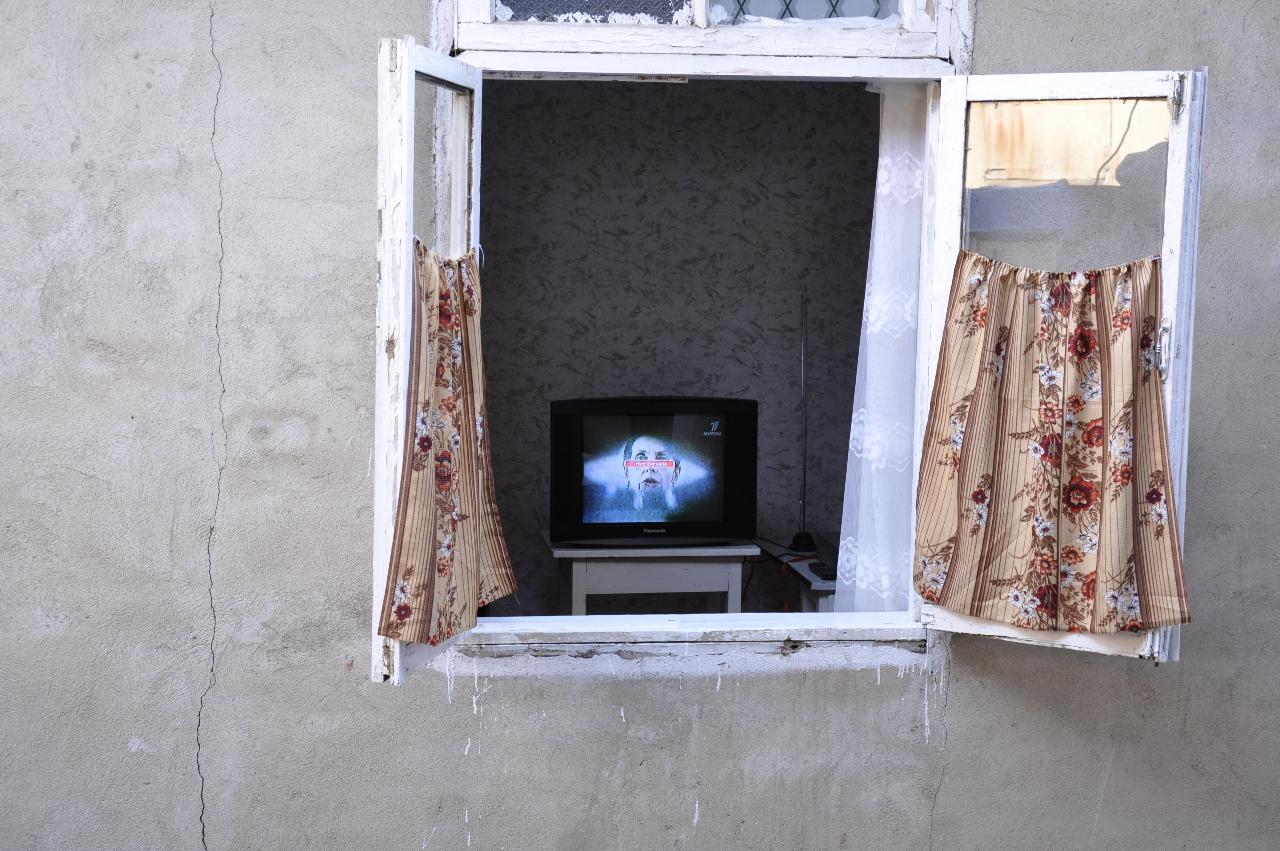 Rusiko Oat, No Signal - Art created by electro-waves / Betlemi mikro-raioni curated by Joanna Warsza / ArtZone Festival, Tbilisi, October 2009
Rusiko Oat, No Signal - Art created by electro-waves / Betlemi mikro-raioni curated by Joanna Warsza / ArtZone Festival, Tbilisi, October 2009
 The balcony with the view over a blue apartment building referring to Sophia Tabatadze's work In Country with Flourishing Democracy, Even Plastic Flowers Will Blossom, / Betlemi mikro-raioni curated by Joanna Warsza / ArtZone Festival, Tbilisi, October 2009
The balcony with the view over a blue apartment building referring to Sophia Tabatadze's work In Country with Flourishing Democracy, Even Plastic Flowers Will Blossom, / Betlemi mikro-raioni curated by Joanna Warsza / ArtZone Festival, Tbilisi, October 2009 Vahram Aghasyan, Ruins of private property / Betlemi mikro-raioni curated by Joanna Warsza, Tbilisi, October 2009, ArtZone festival
Vahram Aghasyan, Ruins of private property / Betlemi mikro-raioni curated by Joanna Warsza, Tbilisi, October 2009, ArtZone festival
slideshow >>>
Labels:
Armenia,
Art,
Bouillon group,
Georgia,
Gyumri,
Joanna Warsza,
Magazin,
Photography,
Project,
Rusiko Oat,
Sophia Tabatadze,
Vahram Aghasyan
NEWS: 26 Nov 09 | Caucasus Reporting Service 521 until 24 Dec 09 | Caucasus Reporting Service 525 (iwpr.net)
24 Dec 09 Caucasus Reporting Service 525
Armenia: Nuclear Plant Controversy
Yerevan pushes ahead with new station in face of protests from ecologists. By Gayane Mkrtchyan in Yerevan (CRS No. 525, 24-Dec-09)
Georgian Conflict Exploitation Concerns
Some observers suspect the authorities are taking advantage of people caught up in Georgia’s wars. By Natia Kuprashvili in Tbilisi and Davit Gaimsonia in Gori (CRS No. 525, 24-Dec-09)
18 Dec 09 Caucasus Reporting Service 524
Armenia: Media Reach Out to Turkey
But commentators say they should not be too quick to let down their guard. By David Muradian and Sara Khojoian in Yerevan (CRS No. 524, 18-Dec-09)
Azeris Turn to Satellite TV in Propaganda Battle
Armenians wooed with TV news broadcasts from the enemy. By Samira Hasanli in Baku (CRS No. 524, 18-Dec-09)
Chechens Mark Ten Years of Exile
A decade after they fled their homeland, Chechens in Georgia still fear it is unsafe to go back. By Lizaveta Zhahanina in Tbilisi (CRS No. 524, 18-Dec-09)
Abkhazia Gets Recognition Boost After Poll
Bagapsh says his re-election showed Abkhaz desire to be independent. By Anaid Gogorian in Sukhum (CRS No. 524, 18-Dec-09)
11 Dec 09 Caucasus Reporting Service 523
Greens Protest Over Georgian Airport Plans
Environmentalists oppose controversial hub close to Black Sea nature reserve. By Lasha Zarginava in Poti (CRS No. 523, 09-Dec-09)
Gyumri Residents Recall Catastrophic Tremor
Destructive force of 1988 earthquake was so swift that people thought the Armenian city had been bombed. By Ashley Killough in Gyumri (CRS No. 523, 09-Dec-09)
4 Dec 09 Caucasus Reporting Service 522
Tbilisi Criticised Over Repatriation Requests
Tens of thousands of Meskhetians apply to come home, but Georgian officials accused of not doing enough to help them. By Fati Mamiashvili in Tbilisi (CRS No. 522, 04-Dec-09)
Georgia: Collapse of Armenian Church Provokes Row
Armenian minority say incident illustrates their limited rights in the country. By Lela Iremashvili in Tbilisi and Hasmik Hambardzumyan in Yerevan (CRS No. 522, 04-Dec-09)
Azeris Face Spending Crunch
Economic experts warn budget cut resulting from falling oil revenues could harm most vulnerable. By Kenan Guluzade in Baku (CRS No. 522, 03-Dec-09)
Project Highlights
Caucasus: Oct/Nov ‘09
IWPR Karabakh workshop participants find out how web journalism can enhance work of journalists and activists. By IWPR staff (4-Dec-09)
Reporting Impact
Caucasus: Oct/Nov ‘09
IWPR discussion events prompt Tbilisi officials to cooperate with Georgian NGOs on refugee issues. By IWPR staff (4-Dec-09)
26 Nov 09 Caucasus Reporting Service 521
Azerbaijan: Ethnic Azeri Immigrants in Rights Struggle
They say the country’s immigration law makes it hard for them to gain permanent residence permits. By Samira Ahmedbeyli in Baku (CRS No. 521, 24-Nov-09)
Armenia Surprised by Anti-Russian Agitation
Emails and text messages seek to spark campaign over military bases. By Naira Melkumyan in Yerevan (CRS No. 521, 24-Nov-09)
Abkhazia Sees Tourism Boom
Russians flock to breakaway territory despite accommodation shortage and poor service. By Anaid Gogorian in Sukhum (CRS No. 521, 26-Nov-09)
Armenia: Nuclear Plant Controversy
Yerevan pushes ahead with new station in face of protests from ecologists. By Gayane Mkrtchyan in Yerevan (CRS No. 525, 24-Dec-09)
Georgian Conflict Exploitation Concerns
Some observers suspect the authorities are taking advantage of people caught up in Georgia’s wars. By Natia Kuprashvili in Tbilisi and Davit Gaimsonia in Gori (CRS No. 525, 24-Dec-09)
18 Dec 09 Caucasus Reporting Service 524
Armenia: Media Reach Out to Turkey
But commentators say they should not be too quick to let down their guard. By David Muradian and Sara Khojoian in Yerevan (CRS No. 524, 18-Dec-09)
Azeris Turn to Satellite TV in Propaganda Battle
Armenians wooed with TV news broadcasts from the enemy. By Samira Hasanli in Baku (CRS No. 524, 18-Dec-09)
Chechens Mark Ten Years of Exile
A decade after they fled their homeland, Chechens in Georgia still fear it is unsafe to go back. By Lizaveta Zhahanina in Tbilisi (CRS No. 524, 18-Dec-09)
Abkhazia Gets Recognition Boost After Poll
Bagapsh says his re-election showed Abkhaz desire to be independent. By Anaid Gogorian in Sukhum (CRS No. 524, 18-Dec-09)
11 Dec 09 Caucasus Reporting Service 523
Greens Protest Over Georgian Airport Plans
Environmentalists oppose controversial hub close to Black Sea nature reserve. By Lasha Zarginava in Poti (CRS No. 523, 09-Dec-09)
Gyumri Residents Recall Catastrophic Tremor
Destructive force of 1988 earthquake was so swift that people thought the Armenian city had been bombed. By Ashley Killough in Gyumri (CRS No. 523, 09-Dec-09)
4 Dec 09 Caucasus Reporting Service 522
Tbilisi Criticised Over Repatriation Requests
Tens of thousands of Meskhetians apply to come home, but Georgian officials accused of not doing enough to help them. By Fati Mamiashvili in Tbilisi (CRS No. 522, 04-Dec-09)
Georgia: Collapse of Armenian Church Provokes Row
Armenian minority say incident illustrates their limited rights in the country. By Lela Iremashvili in Tbilisi and Hasmik Hambardzumyan in Yerevan (CRS No. 522, 04-Dec-09)
Azeris Face Spending Crunch
Economic experts warn budget cut resulting from falling oil revenues could harm most vulnerable. By Kenan Guluzade in Baku (CRS No. 522, 03-Dec-09)
Project Highlights
Caucasus: Oct/Nov ‘09
IWPR Karabakh workshop participants find out how web journalism can enhance work of journalists and activists. By IWPR staff (4-Dec-09)
Reporting Impact
Caucasus: Oct/Nov ‘09
IWPR discussion events prompt Tbilisi officials to cooperate with Georgian NGOs on refugee issues. By IWPR staff (4-Dec-09)
26 Nov 09 Caucasus Reporting Service 521
Azerbaijan: Ethnic Azeri Immigrants in Rights Struggle
They say the country’s immigration law makes it hard for them to gain permanent residence permits. By Samira Ahmedbeyli in Baku (CRS No. 521, 24-Nov-09)
Armenia Surprised by Anti-Russian Agitation
Emails and text messages seek to spark campaign over military bases. By Naira Melkumyan in Yerevan (CRS No. 521, 24-Nov-09)
Abkhazia Sees Tourism Boom
Russians flock to breakaway territory despite accommodation shortage and poor service. By Anaid Gogorian in Sukhum (CRS No. 521, 26-Nov-09)
ART: New Paintings by Maka Batiashvili (maka.batiashvili.net)
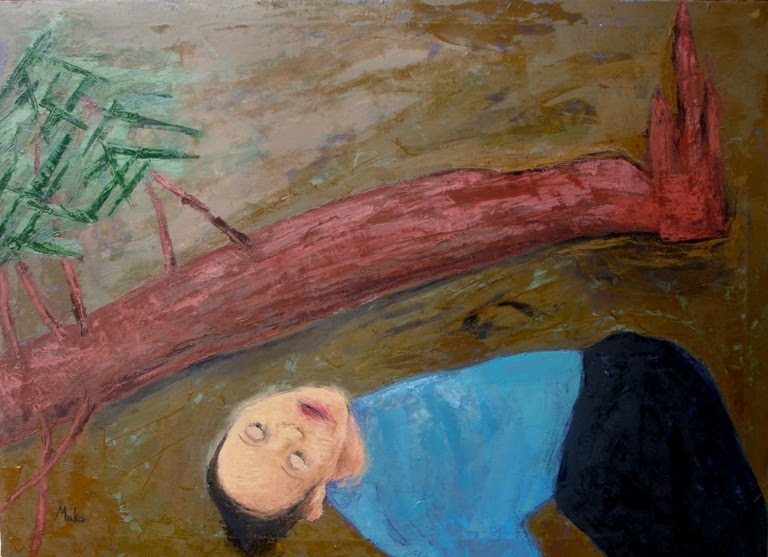 Without Dreams, 105x75, 2009
Without Dreams, 105x75, 2009 The Saved, 50 x 60, 2009
The Saved, 50 x 60, 2009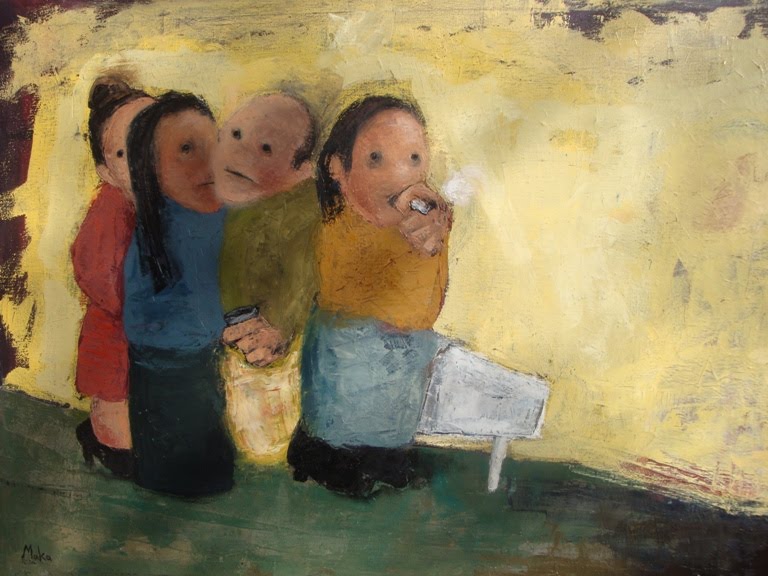 The Gatherin, 105 x 80, 2009
The Gatherin, 105 x 80, 2009 8am, 100 x 70, 2009
8am, 100 x 70, 2009 The Gift, 60 x 40, 2009
The Gift, 60 x 40, 2009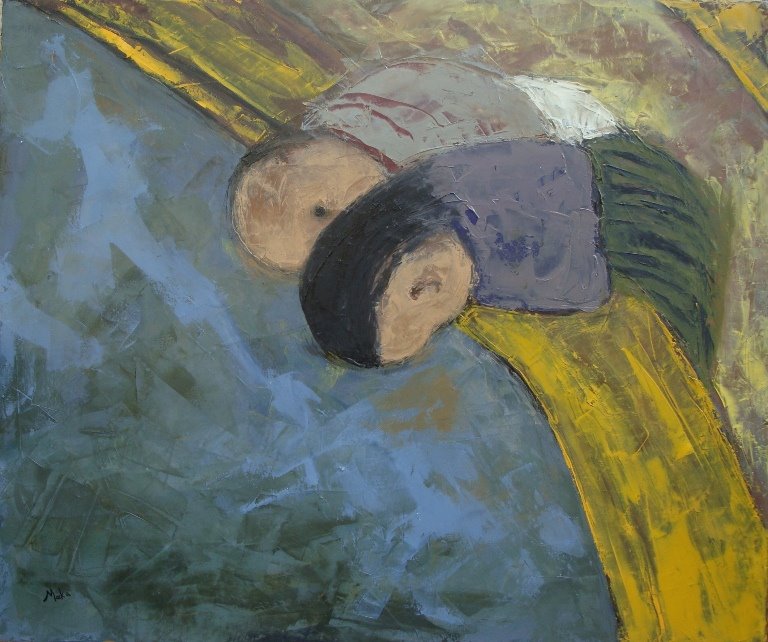 The Bridge, 60 x 50, 2009
The Bridge, 60 x 50, 2009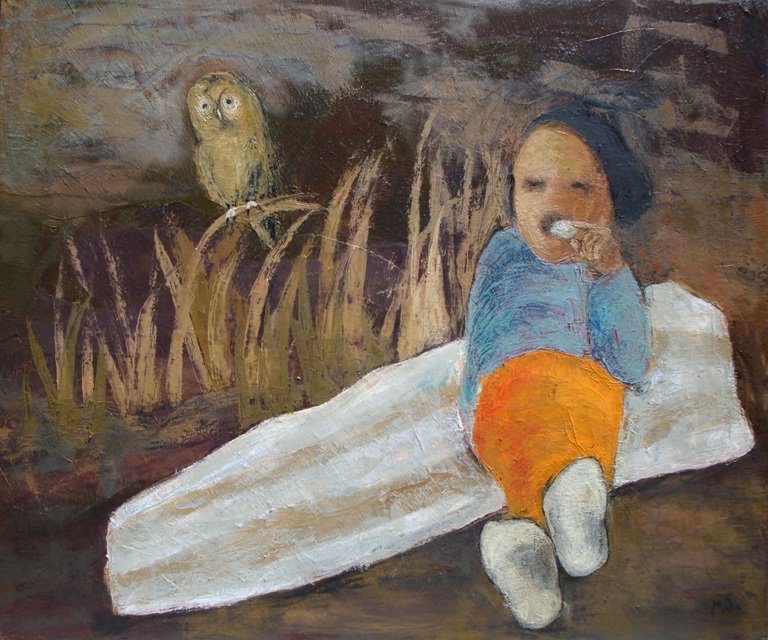
Owl, 60 x 52, 2009
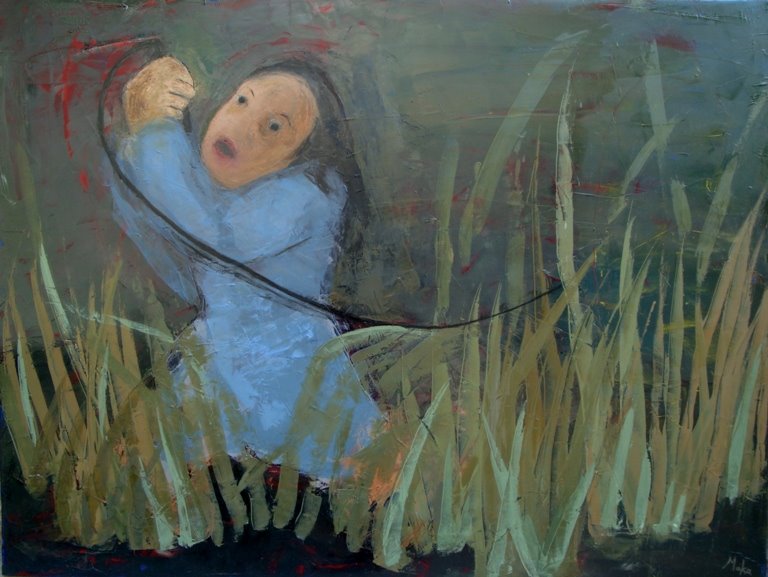 The Whip, 80 x 61, 2009
The Whip, 80 x 61, 2009more: maka.batiashvili.net
NEW BLOG: GEORGIAN ARTISTS. ARCHIDROME (georgianartistsarchidrome.blogspot.com)
DATABASE OF CONTEMPORARY GEORGIAN ARTISTS' WEBSITES
It is about making a place where people can come and see creations, knowledge, experience and ideas that originate or are to be found in the Caucasus. It is like opening a window that gives you the opportunity to look into this field.
more here: georgianartistsarchidrome.blogspot.com
SITES REALTED TO GEORGIAN ART
- Art Georgia (in georgian)
- Art Salon
- Art Villa Garikula
- Beat Magazine
- Caparol Art Gallery
- Contemporary Art Club
- Georgi Arabuli Art Gallery
- Georgian Art & Culture
- Georgian Female Artists
- georgien.blogspot.com
- Georgisches Kulturforum
- goslab
- Khinkali Juice
- Lib.ge Gallery (in georgian)
- NEW ART UNION
- Photohouse Kolga
- Poster Design Studio
- SOMEONEISTYPING
- TBILISI 1. TUESDAY IS GONE
- TBILISI 2. WEDNESDAY CALLS THE FUTURE
- TBILISI 3. LET'S STAY ALIVE TILL MONDAY
- TBILISI 4. EVERYDAY IS SATURDAY
- TBILISI 5. WEDNESDAY WAS THURSDAY. 2008
- TBILISI 6. NEVER ON SUNDAY
- Tbilisi International Exhibition of Contemporary Art
- The Art Club Caucasus
- Tiflis Transfer Project Blog
- TRAM TRansform Art Module
- Varvaridze Design Group
- We are sweet, and we know that
RELATED LINKS
GEORGIAN FASHION DESIGNERS
-
Labels:
Art,
Blog,
Georgia,
nini palavandishvili,
South-Caucasus
BERLIN: Ausstellung und orthodoxe Weihnachten - Mittwoch, 06. Januar 2010 um 19:00 Uhr (LISTROS.DE)
Es erwartet Euch georgischer Wein, georgisches und äthiopisches Essen, Musik, Tanz und DJ, Überraschungsversteigerung, Live-Zeichnen ...
HERZLICHE EINLADUNG In die LISTROS-GALERIE.
zu einem kulturellen Treffen der besonderen Art: Mit einer Ausstellung schwarz-weißer Papierarbeiten des georgischen Malers Zura Apkhazashvili und äthiopischen Kreuzen aus dem Fundus der Steyler Missionare St. Augustin begehen wir äthiopische und georgische Weihnachten.
An festlicher Tafel widmen wir das Gespräch Fragen der „Kunst als Motor“.
zur Finissage der Ausstellung “ DIE REISE DANACH“ von Lupe Godoy. Die Ausstellung ist Zeugnis einer Äthiopienreise, zu der sich die Künstlerin im Rahmen des LISTROS Projekts OUANSA im Frühjahr 2008 aufmachte.
Am Dreikönigstag, Lebensgefühl, Licht, Landschaften und Spiritualität des Landes am Horn von Afrika werden in leuchtenden Bildern erlebbar.
Mittwoch, 06. Januar 2010 um 19:00 Uhr
LISTROS - GALERIE: KURFÜRSTENSTR. 33 D-10785 BERLIN TEL: 030 325 91 220 MOBIL: 0171 38 70 737 MAIL@LISTROS.DE WWW.LISTROS.DE
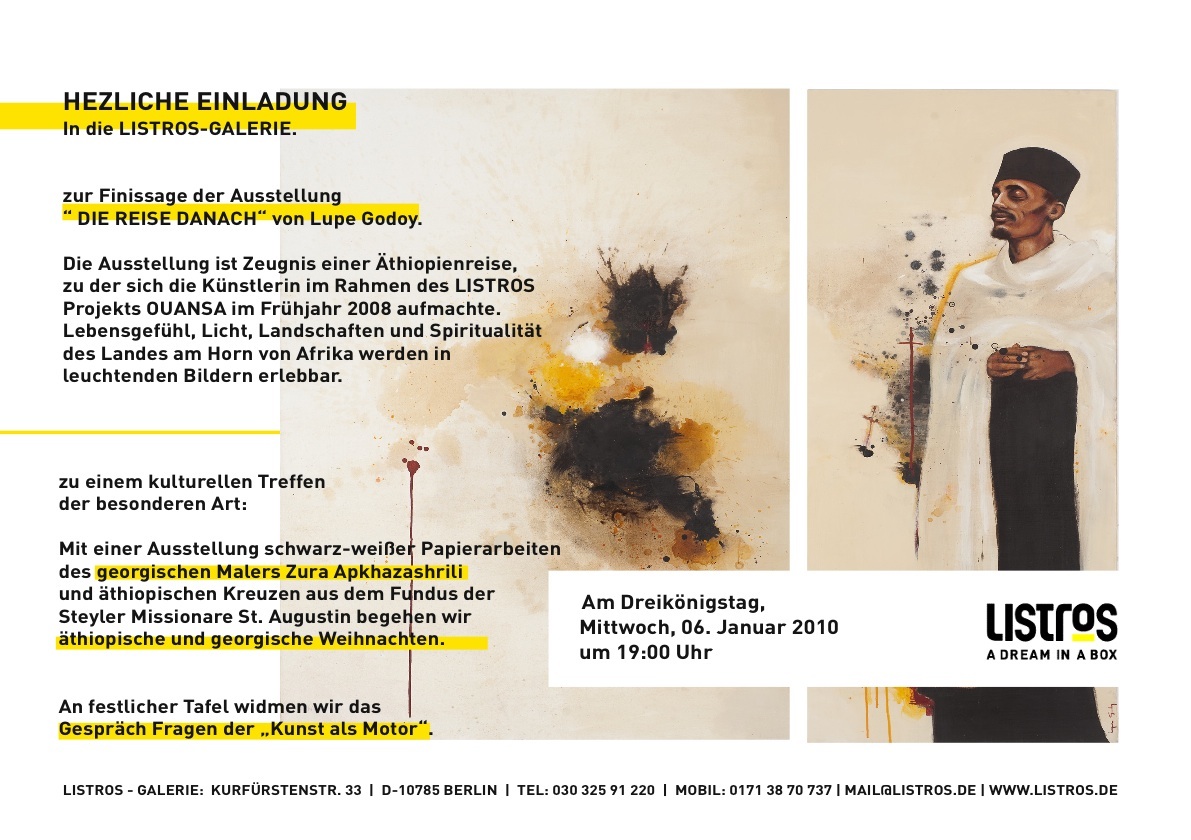



Saturday, December 26, 2009
OPENING EXHIBITION: «Letters» project. Moscow, 30 january — 23 february 2010. By Irma Sharikadze (gmggallery.com)
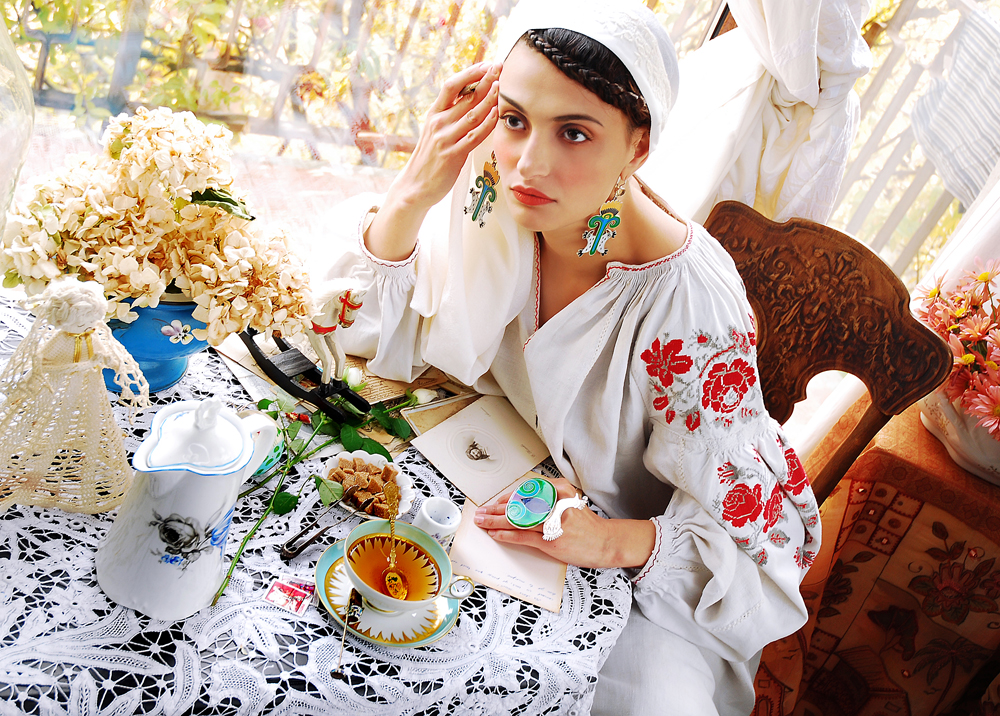
The original project «Letters» is perceived in Moscow as national and feminine project. Georgian artist Irma Sharikadze explores the character of the Mexican artist Frida Kahlo as a metaphor of artistic, feminine and national identity. The first picture by Frida was her self-portrait. She painted herself because she was «the subject she knew best», as she put it. The self-portrait with her twin sister is of particular importance to us. It depicts two beautiful young women in their best clothes and with naked hearts. Their hearts are bound by the same blood flow.
The «Letters» project by the Georgian artist reminds us of our joint cultural blood flow, of the art's ability to cross the borders and possess not only people, but also itself. Frida invented her twin sister who is now inventing Frida, being Irma Sharikadze's character. In the «Letters» project we see them both – Frida and Maritsa – the Georgian artist's alter ego, her own game with the artist's character, character strategies, history and languages of art.
The character tempts the artist to live another life, the twin sister makes it possible. Frida gave birth to Maritsa, Frida appears in the letters to Maritsa – the sisters become each other's symbolic mothers. («We'd better do it like that: be my mother and I'll be yours, if you have nothing against that, of course») This tender metaphor is pierced by sophisticated dialectics of image and referent, artist and character. It's a dialectics of maturing that appealed to Frida Kahlo and probably made the very essence of her art. Irma Sharikadze integrates her own artistic maturing into these two imaginary biographies of the sisters.
Moreover, twin sisters double the beauty. Vitality and strong beauty of the Georgian artist's characters send us back to the lines of Sergei Parajanov's force field. The viewer's attention slides along the impeccable image and stumbles at the handwritten text below the picture. Thus, the viewer's perception of the project is based not on the clichés of the glossy magazines that directly associate with spectacular photography, but on conceptual codes. Though, Irma has special relationship with these codes, just like Frida had with surrealist painting. ("They thought I was a Surrealist," she said, "… but I wasn't. I never painted dreams…I painted my own reality".)
Being a sister and a mother at the same time means having the same father, who becomes a husband. In her dream, Frida sees her mother in batiste dress, but suddenly discovers hairy male chest under the light tissue. Artistic effort speaks through this rather spooky dream. At this point individuality breaks free from ancestral taboo. Irma Sharikadze's emancipated effort shows in the rebellion against life circumstances, craving for manliness. The project is electrified by reflections starting with phonetics, not mirrors: Frida, Irma, Georgia, Revolution, Maritsa. We hear the sounds of post-colonial rhymes – Georgian artist in Moscow art scene like Mexican artist in the art scene of New York. Frida found herself in New York when she was 23. One more fact: Frida wore pre-Columbian jewelry of ancient Mesoamerica. The project features amazing jewelry that carries resemblance with archaic art. When looking in the mirror in the installation, we recall bedbound Frida who took the brush for the first time to paint a picture – a picture of herself.
Alexander Evangeli
+++
GMG Gallery
2A/1 Leont'evskiy pereulok
Moscow, 125009
Russia
T: + 7 495 626 88 80
F: + 7 495 626 88 80
GMG Gallery is situated in front of Matryoshka Museum.
Entrance from the backyard.
Look at Google Maps
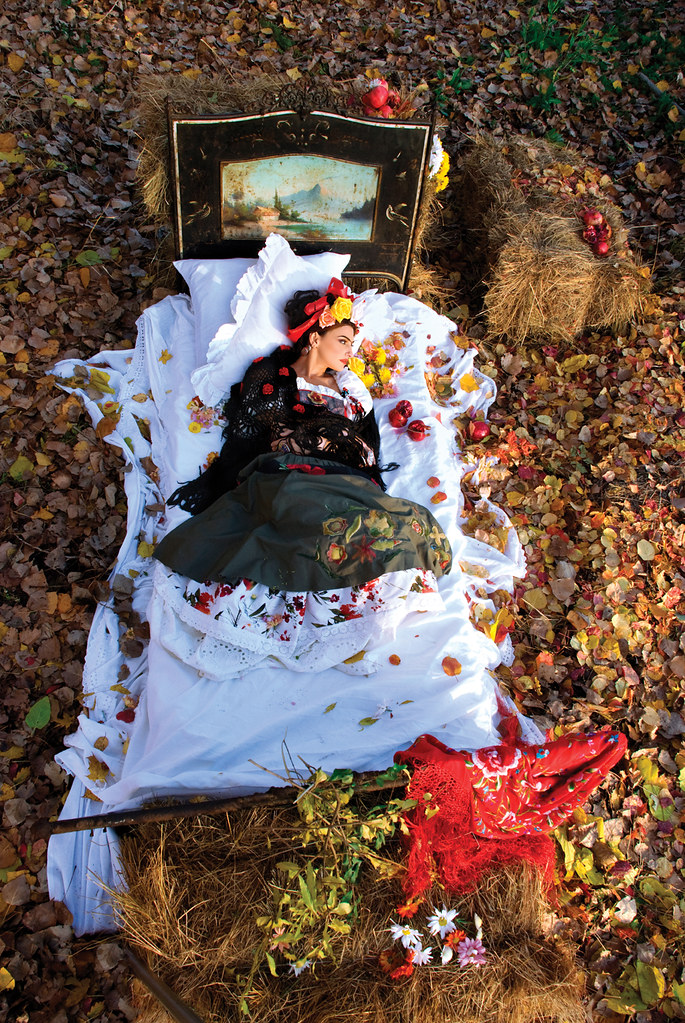


slideshow >>>
PHOTOGRAPHY: Journalist Anna Chichinadze presented some of her Georgian Photographies
Labels:
Anna Chichinadze,
Journalism,
Journalists,
Photographer,
Photography
BOOK: Shamanic Journeys Through the Caucasus. By Michael Berman
Cover: Maka Batiashvili
Paperback: 240 pages
Publisher: O Books (December 16, 2009)
Language: English
ISBN-10: 1846942535
ISBN-13: 978-1846942532
Product Dimensions: 8.3 x 5.5 x 0.7 inches
Review
As I read your book, I keep thinking of how much time, effort and research it must have involved, and wondering how long it took you to write it. Quite amazing and really admirable. There's a mine of information in there! -- Ana Ransom, teacher and translatorI found the book 'Shamanic Journeys through the Caucasus' deeply interesting. How refreshing to find a book about shamanism that has a balance of sound research and rare original stories. -- Angela Davis, shamanic practitioner and artistThe wonderful stories in this book convey the continuing relevance of the pagan understanding of the unity of all being, as well as the shaman's healing journey between numinous and material semiospheres. -- Dr Julienne Ford, former lecturer at the London School of Economics and the founder of the publishing company Superscript
Product Description
Everything shifts in the Caucasus, blown by some of the strongest winds on earth. Even the ground moves, splintered by fault lines. In early Georgian myths, it is said that when the mountains were young, they had legs - could walk from the edges of the oceans to the deserts, flirting with the low hills, shrouding them with soft clouds of love. (Griffin, 2001, p.2).
But what about those aspects of life which remain relatively constant - the traditional practices of the mountain people, the practices that are reflected in their folktales and their folklore? It is these constants that this study concentrates on, in particular those that relate to shamanism.
AmazonShop: Books, Maps, Videos, Music & Gifts About The Caucasus
Labels:
Amazon,
Book,
Caucasus,
Literature,
Maka Batiashvili,
Michael Berman
Thursday, December 24, 2009
CHISTMAS SEASON: Enjoying New Publication Of My Photographies (southcaucasus.net)
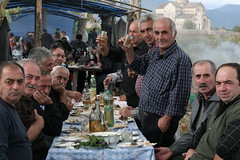 All my readers, friends, subscripters I wish now Mery Christmas, Happy New Year 2010, Health and Peace. Unfortunatly I can't meet most of my friends ;-) But next year I think I can see some of my friends.
All my readers, friends, subscripters I wish now Mery Christmas, Happy New Year 2010, Health and Peace. Unfortunatly I can't meet most of my friends ;-) But next year I think I can see some of my friends. I wish good parties and meals similair like this on the photo ;-) And enjoy my blog! Enyoy my new public photos here! And I hope we have good times in Georgia soon (also with my european friends). Georgia and above Armenia I wish more stability, economic growth and a better balance in the daily life for all people there. And for myself I wish me a bettter interchange between Europe and the South Caucasus. It is important and helpful for both sides!
Here are my new public Photos!! Enjoy my point of views of Georgia during the Christmas season and in the NEW YEAR 2010! I hope I can open an exhibition with some of my photos soon.
Your friend, Ralph Hälbig
>>> southcaucasus.net/southcaucasus
Labels:
Armenia,
Azerbaijan,
Georgia,
Photographer,
Photography,
Ralph Hälbig,
South-Caucasus
Wednesday, December 23, 2009
NACHRUF: Traueranzeige Hans-Friedrich von Knobelsdorff
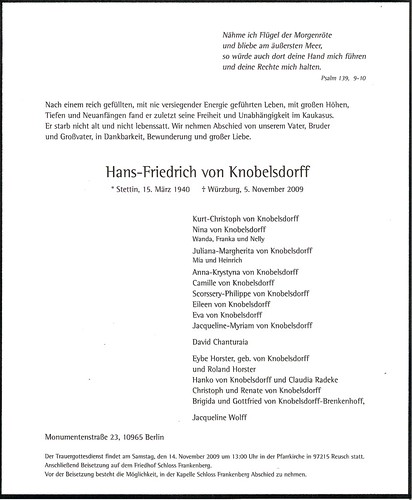 Vor drei Tagen hatte ich erfahren, dass Hans-Friedrich von Knobelsdorff im Herbst diesen Jahres verstorben ist. Ich hatte ihn leider nur einmal in Georgien getroffen - bei der Hochzeit eines Freundes. Er ist mir danach sehr angenehm in Erinnerung geblieben und er wird es auch bleiben. Die paar Stunden, die ich mit ihm zusammen verbrachte, waren brilliant. Hans-Friedrich wirkte auf mich wie ein preußischer Landadel: groß, stattlich, warmherzig, mit hellwachen Augen. Klug zudem...
Vor drei Tagen hatte ich erfahren, dass Hans-Friedrich von Knobelsdorff im Herbst diesen Jahres verstorben ist. Ich hatte ihn leider nur einmal in Georgien getroffen - bei der Hochzeit eines Freundes. Er ist mir danach sehr angenehm in Erinnerung geblieben und er wird es auch bleiben. Die paar Stunden, die ich mit ihm zusammen verbrachte, waren brilliant. Hans-Friedrich wirkte auf mich wie ein preußischer Landadel: groß, stattlich, warmherzig, mit hellwachen Augen. Klug zudem...Es war sehr aufschlussreich, wie er Georgien beschrieb: kritisch, reflexiv, zugetan, kenntnisreich und voller Liebe für das Land und die Leute. Er klang nie anmaßend. Er war intellektuell. Und er war ein selten aufgeschlossener Mensch in seiner Art. Inwiefern er sich am Leben aufrieb, kann ich nicht beurteilen.
Wie ich von einem seiner Söhne erfuhr, hatter er reichlich Lebenserfahrung, hatte einiges im Leben erlebt, hatte immer wieder gern neu angefangen. Er war nicht müde, etwas zu unternehmen. Nach seinem Dienst in Georgien blieb er in diesem Land. Er begann zusammen mit Tataren Pferde zu züchten: "Goldene Pferde", wie er mir beschrieb. "Pferde in der Steppe an der Grenze zu Aserbaidschan glänzen bei Regen in der südkaukasischen Sonne - golden."
Hans-Friedrich war stattlich, wirkte jung und poetisch - er war mit 69 Jahren immer noch ein Abenteurer und außergewöhnlicher Mensch! Junggeblieben starb er zu jung!! Er liebte das Leben - und er war ein neugieriger Mensch. Ich wollte ihn bei meiner nächsten Reise bei seinen beinahe 50 Pferden besuchen. Ich war neugierig auf seine Geschichte!
Nun ist er im November verstorben. Er hatte wohl lange Jahre unbehandelten Bluthochdruck, und am 7. Oktober gab es Komplikationen. Er wurde dann in Tbilisi relativ gut operiert, aber dann gab es eine Sepsis und er wurde am 25. Oktober aus Georgien ausgeflogen. In Deutschland verbesserte sich sein Zustand. Unerwartet kam es jedoch am 4. November zum Herzstillstand.
Ich bin mir sicher, dass auch die Georgier, die ihn kannten, Hans-Friedrich von Knobelsdorff in Erinnerung behalten werden und auf ihn immer mal wieder - gemäß ihrer Sitte - anstoßen und ihn ehren werden!! Gaurmarjoss!!
Mein herzliches Beileid den Familienmitgliedern, Angehörigen und Freunden! Ralph Hälbig
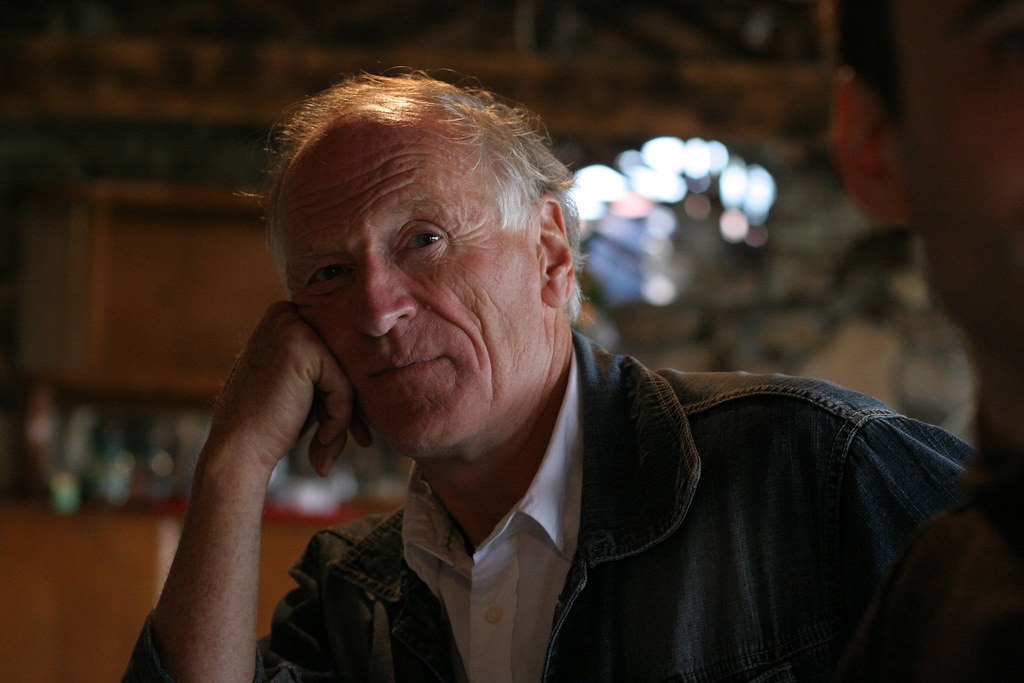
VEREIN: Jahresbericht 2009 - Lile e.V. (lile.de)
- 9. April 1989 Dokumentation/Gespräche. Metropoliskino Hamburg. Mit Dr. David Kakapadze und dr. Frank Tremmel, Minister für Diaspora Prof. Julon Gagoschidze
- Zeitschrift Einblick-Georgien April 2009. Heft II
- Vortrag beim Literaturkreis von Dr. Peter Schütt. 19.04.09
- Reise nach Georgien 12.-22. Oktober
- Lesung mit dem deutschsprachigen Schriftsteller Tengiz Khachapuridze 24.10.09
- Drehearbeiten. Projekt „Zuschauer Räume“ von Giwi Margwelaschwili November 2009
- Zeitschrift Einblick-Georgien Dezember 2009. Heft III
- Einrichtung des neuen Blogs: www.einblickgeorgien.blogspot.com
Am 9. April haben wir nach 20 Jahren der Geschehnisse von 1989 gedacht. Wir haben einen Dokumentarfilm von Eldar Schengelaia gezeigt und einige Ausschnitte von Thoma Tschagelischewilis Dokumentation. Das Ministerium für die Diaspora hat uns mit 1000,00 Euro unterstützt. Diese Mittel haben wir für diese Veranstaltung und für die Ausgabe unserer Zeitschrift verwendet.
Die Veranstaltung lag in der Osterzeit und uns war bewusst, dass aufgrund der Ferien sowie des schwierigen Themas keine große Besucherzahl zu erwarten war. Außerdem war die sehr angespannte Situation in Georgien zu diesem Zeitpunkt auch Anlass zu Auseinandersetzungen und Emotionen unter Georgiern hier in Deutschland. Uns war es aber sehr wichtig, genau an diesen Tag zu erinnern. Es war der Tag, an dem mit vielen Opfern die Berliner Mauer anfing zu fallen und der bis heute wegen seiner Brutalität (Giftgase), aber auch aufgrund seiner politischen Brisanz verschwiegen wird. Wir bedauern sehr, dass Georgien erneut eine große Chance verpasst hat und nicht an den internationalen Projekten und Veranstaltungen, die dem Jubiläum "20 Jahre Mauerfall" in ganz Europa 2009 gewidmet waren, teilgenommen hat. Daher ist unsere Veranstaltung fast die einzige zu diesem wichtigen historischen Ereignis geblieben. Den Abend haben Dr. David Kakabadze, Dr. Frank Tremmel und Marika Lapauri-Burk moderiert.
Es war sehr schön, dass Herr Minister Prof. Gagoschidze an der Veranstaltung teilgenommen hat. Wir möchten aber bemerken, dass die georgische Seite bezüglich der administrativen Planung und der Ausbildung schwerpunktmäßiger Arbeit noch viel nachzuholen hat.
Wir haben die Arbeit im Zusammenhang mit der Herausgeben der Zeitschrift weiter fortgesetzt. Wir können bereits an dieser Stelle zusichern, dass wir diese Arbeit mit aller Kraft weiterführen werden. Schon gleich möchten wir um Unterstützung für folgende Aufgaben bitten: Übersetzungen, Bekanntmachung, Spenden, auch in Form von Briefmarken.
Wir sind absolut überzeugt von der Notwendigkeit dieser Arbeit. Unsere Textauswahl ist exklusiv. Es handelt sich um Texte, die erstmals auf Deutsch erscheinen oder extra für die Zeitschrift geschrieben wurden. Die Texte sind aktuell und nicht von Tagesaktualitäten abhängig. Es erscheinen 500 Exemplare. Beim Erscheinen der nächsten Auflage wird jeweils die vorherige im Internet zu Verfügung gestellt. Wir verschicken gezielt an verschiedene Redaktionen und Institutionen. Außerdem stehen 3 Annoncen im Internet (www.einblickgeorgien.blogspot.com: Wir brauchen noch mehr Internetpräsenz.) Sie können auch helfen, wenn Sie z.B. beim Verschicken von Emails als automatische Signatur schreiben würden:
„Zeitschrift Einblick Georgien erhalten Sie unter info@lile.de.“ Sie können sich selbstverständlich gerne auch einen anderen Werbesatz ausdenken.
Die erste Auflage ist komplett vergriffen. Von Heft I und II haben wir einiges verkauft. (5,00 Euro + Versand). Die Nachfrage ist vorhanden, aber uns fehlt es an Werbung. Die georgische Botschaft würdigte unsere Arbeit und wollte gerne eine bestimmte Menge zur Verfügung gestellt bekommen. Leider wurde der Rabatt von 1,00 Euro pro Zeitschrift, was nicht annähernd den Selbstkosten entspricht, für nicht akzeptabel zur Abnahme befunden. Diese Zeitschrift haben wir daher selbst, da wo wir es für notwendig erachtet haben, mit Kosten in Höhe von ca. 300,00 Euro verschickt. Wir sind allerdings der Meinung, dass die georgische Seite aufgerufen gewesen wäre, im eigenen Interesse mindestens eine symbolische Teilnahme zu signalisieren.
Für den redaktionellen Teil zeichnen verantwortlich Dr. Frank Tremmel und Marika Lapauri-Burk. Wir danken diesmal Niko Tarielaschwili (Graphik), Mzia Maisuradze-Stolley, Nana Jacques (Übersetzungen), Gia Lapauri (Bildmaterial).
Die Einladung bei dem Literaturkreis von Dr. Peter Schütt (19.04.09) erfolgte aufgrund unserer Zeitschriftenarbeit. Marika Lapauri-Burk und Dr. Frank Tremmel haben dort einen kleinen Vortrag und anschließend angeregte Gespräche geführt. Wir danken Dr. Peter Schütt für diese Gelegenheit.
Vom 2.-22. Oktober hat Marika Lapauri-Burk eine Reise nach Georgien unternommen, um einige wichtige Termine wahrzunehmen. (Patriarch Ilia II., Kulturminister, Auswärtiger Minister, Minister für Diaspora, Leiter der strategischen Studien Prof. Alexandre Rondeli, einige Mitglieder des Parlaments). Auslöser war der Artikel von Marika Lapauri-Burk, der zu einer Diskussion bezüglich Bagrati und Sioni von Ateni in Georgien geführt hatte. Patriarch Ilia II, hatte daraufhin den Wunsch geäußert, unsere Arbeit näher kennen zu lernen. Marika Lapauri-Burk hat mehrere Artikel zu verschiedene Themen in Georgien veröffentlicht, die große Resonanz hervorriefen. Den detaillierten Reisebericht können sie bitte auf unser Homepage nachlesen.
Unsere Projekte mit der Denkmalschutzbehörde und Georgien (Kisiskhevi und Sioni von Ateni) sind dieses Jahr nicht optimal verlaufen. Was Ateni betrifft, haben wir uns entschlossen, aus unseren Mitteln (großzügige finanzielle Zuwendung und Organisationshilfe von einem unbekannten Spender) ein Projekt selbst zu finanzieren. Das Projekt leitet Andreas Formann in Rücksprache mit unseren Beratern Prof. Barthel und Prof. Emmerling von der TU München.
Wir hoffen sehr, dass sich die Lage nach unserem Projektabschluss und einem Treffen mit georgischen Teilnehmern und der Denkmalschutzbehörde in Richtung auf einen optimalen weiteren Projektablauf hin normalisieren wird.
Am 24.10.09 hat eine Lesung mit dem deutschsprachigen Schriftsteller Tengiz Khachapuridze und Marika Lapauri-Burk statt gefunden. Tengiz Khachapuridze hat einige Literaturauszeichnungen in Deutschland bekommen. Der Abend wurde von allen Teilnehmern als sehr gelungen empfunden und wir haben daher entschieden, einmal im Monat einen Literaturabend mit Saloncharakter zu veranstalten. Alle Interessierten sind herzlich willkommen.
Nach vielen Versuchen ist es uns gelungen, eine Unterstützung in Höhe von 3000,00 Euro zu bekommen. Das Geld wird von der Kulturbehörde Hamburg zur Verfügung gestellt und für das Projekt "Zuschauer Räume" von Giwi Margwelaschwili verwendet. Die Drehearbeiten haben vom 12.-14.11.09 statt gefunden. Die Drehearbeiten waren öffentlich und insofern gleichzeitig eine sehr intensive und schöne Veranstaltung. Regie führte Marika Lapauri-Burk, Kamera, - Niko Tarielaschwili. Am Projekt nehmen Dr. Frank Tremmel und Gia Lapauri teil. Demnächst werden wir dieses Material als Film schneiden. Wir sind überzeugt von der Qualität und Wichtigkeit dieses Projektes und allein durch die Teilnahme des Philosophen Giwi Margwelaschwili ist dieses Material schon jetzt wertvoll.
Gleich nach Beendigung von Einblick-Georgien. Heft II, haben wir die Arbeit am nächsten Heft Einblick-Georgien Dezember 2009. Heft III begonnen. Die Arbeit ist sehr intensiv und fordert von unserm schon gebildeten kleinen Team viel Einsatz. An dieser Stelle möchten wir Niko Tarielaschwili für seine professionelle Hilfe bei der graphischen Gestaltung sowie Nana Jacques für ihre Übersetzungen herzlich danken. Eine derartige Ausgabe von Texten dieser inhaltlichen Qualität sowie der Druckgestaltung gibt es bis jetzt in Europa nicht. Es wäre schön, wenn diese Arbeit Unterstützung erhalten würde, damit wir mindestens im deutschsprachigen Raum ein Netz aufbauen können, um das Heft bekannter zu machen. Nach Rückrufen, die wir bekommen, ist deutlich, wie wichtig diese Arbeit ist.
Am 19.12.09 haben wir einen weiteren Literaturabend bei Familie Blendinger organisiert und den Schriftsteller Peter Schütt eingeladen. Er hat aus seinem neuen Buch "Von Basbeck am Moor über Moskau nach Mekka" vorgelesen. Es wurde ein langer, inspirierender Abend.
Es wäre schön, wenn Sie in bezug auf den eingerichteten neuen Blog: www.einblickgeorgien.blogspot.com zu weiterer Verlinkung beitragen würden.
Wir möchten an unsere Mitglieder erinnern, dass einige Beiträge nicht eingegangen sind.
Wir freuen uns über jede Unterstützung. Auch Anregungen und neue Kontakte sind uns immer willkommen.
Wir danken an allen, die an unserer Arbeit Interesse haben und wünschen Ihnen alles Gute!
Lile e. V. Marika Lapauri – Burk,
Andreas Blendinger
- Zeitschrift Einblick-Georgien April 2009. Heft II
- Vortrag beim Literaturkreis von Dr. Peter Schütt. 19.04.09
- Reise nach Georgien 12.-22. Oktober
- Lesung mit dem deutschsprachigen Schriftsteller Tengiz Khachapuridze 24.10.09
- Drehearbeiten. Projekt „Zuschauer Räume“ von Giwi Margwelaschwili November 2009
- Zeitschrift Einblick-Georgien Dezember 2009. Heft III
- Einrichtung des neuen Blogs: www.einblickgeorgien.blogspot.com
Am 9. April haben wir nach 20 Jahren der Geschehnisse von 1989 gedacht. Wir haben einen Dokumentarfilm von Eldar Schengelaia gezeigt und einige Ausschnitte von Thoma Tschagelischewilis Dokumentation. Das Ministerium für die Diaspora hat uns mit 1000,00 Euro unterstützt. Diese Mittel haben wir für diese Veranstaltung und für die Ausgabe unserer Zeitschrift verwendet.
Die Veranstaltung lag in der Osterzeit und uns war bewusst, dass aufgrund der Ferien sowie des schwierigen Themas keine große Besucherzahl zu erwarten war. Außerdem war die sehr angespannte Situation in Georgien zu diesem Zeitpunkt auch Anlass zu Auseinandersetzungen und Emotionen unter Georgiern hier in Deutschland. Uns war es aber sehr wichtig, genau an diesen Tag zu erinnern. Es war der Tag, an dem mit vielen Opfern die Berliner Mauer anfing zu fallen und der bis heute wegen seiner Brutalität (Giftgase), aber auch aufgrund seiner politischen Brisanz verschwiegen wird. Wir bedauern sehr, dass Georgien erneut eine große Chance verpasst hat und nicht an den internationalen Projekten und Veranstaltungen, die dem Jubiläum "20 Jahre Mauerfall" in ganz Europa 2009 gewidmet waren, teilgenommen hat. Daher ist unsere Veranstaltung fast die einzige zu diesem wichtigen historischen Ereignis geblieben. Den Abend haben Dr. David Kakabadze, Dr. Frank Tremmel und Marika Lapauri-Burk moderiert.
Es war sehr schön, dass Herr Minister Prof. Gagoschidze an der Veranstaltung teilgenommen hat. Wir möchten aber bemerken, dass die georgische Seite bezüglich der administrativen Planung und der Ausbildung schwerpunktmäßiger Arbeit noch viel nachzuholen hat.
Wir haben die Arbeit im Zusammenhang mit der Herausgeben der Zeitschrift weiter fortgesetzt. Wir können bereits an dieser Stelle zusichern, dass wir diese Arbeit mit aller Kraft weiterführen werden. Schon gleich möchten wir um Unterstützung für folgende Aufgaben bitten: Übersetzungen, Bekanntmachung, Spenden, auch in Form von Briefmarken.
Wir sind absolut überzeugt von der Notwendigkeit dieser Arbeit. Unsere Textauswahl ist exklusiv. Es handelt sich um Texte, die erstmals auf Deutsch erscheinen oder extra für die Zeitschrift geschrieben wurden. Die Texte sind aktuell und nicht von Tagesaktualitäten abhängig. Es erscheinen 500 Exemplare. Beim Erscheinen der nächsten Auflage wird jeweils die vorherige im Internet zu Verfügung gestellt. Wir verschicken gezielt an verschiedene Redaktionen und Institutionen. Außerdem stehen 3 Annoncen im Internet (www.einblickgeorgien.blogspot.com: Wir brauchen noch mehr Internetpräsenz.) Sie können auch helfen, wenn Sie z.B. beim Verschicken von Emails als automatische Signatur schreiben würden:
„Zeitschrift Einblick Georgien erhalten Sie unter info@lile.de.“ Sie können sich selbstverständlich gerne auch einen anderen Werbesatz ausdenken.
Die erste Auflage ist komplett vergriffen. Von Heft I und II haben wir einiges verkauft. (5,00 Euro + Versand). Die Nachfrage ist vorhanden, aber uns fehlt es an Werbung. Die georgische Botschaft würdigte unsere Arbeit und wollte gerne eine bestimmte Menge zur Verfügung gestellt bekommen. Leider wurde der Rabatt von 1,00 Euro pro Zeitschrift, was nicht annähernd den Selbstkosten entspricht, für nicht akzeptabel zur Abnahme befunden. Diese Zeitschrift haben wir daher selbst, da wo wir es für notwendig erachtet haben, mit Kosten in Höhe von ca. 300,00 Euro verschickt. Wir sind allerdings der Meinung, dass die georgische Seite aufgerufen gewesen wäre, im eigenen Interesse mindestens eine symbolische Teilnahme zu signalisieren.
Für den redaktionellen Teil zeichnen verantwortlich Dr. Frank Tremmel und Marika Lapauri-Burk. Wir danken diesmal Niko Tarielaschwili (Graphik), Mzia Maisuradze-Stolley, Nana Jacques (Übersetzungen), Gia Lapauri (Bildmaterial).
Die Einladung bei dem Literaturkreis von Dr. Peter Schütt (19.04.09) erfolgte aufgrund unserer Zeitschriftenarbeit. Marika Lapauri-Burk und Dr. Frank Tremmel haben dort einen kleinen Vortrag und anschließend angeregte Gespräche geführt. Wir danken Dr. Peter Schütt für diese Gelegenheit.
Vom 2.-22. Oktober hat Marika Lapauri-Burk eine Reise nach Georgien unternommen, um einige wichtige Termine wahrzunehmen. (Patriarch Ilia II., Kulturminister, Auswärtiger Minister, Minister für Diaspora, Leiter der strategischen Studien Prof. Alexandre Rondeli, einige Mitglieder des Parlaments). Auslöser war der Artikel von Marika Lapauri-Burk, der zu einer Diskussion bezüglich Bagrati und Sioni von Ateni in Georgien geführt hatte. Patriarch Ilia II, hatte daraufhin den Wunsch geäußert, unsere Arbeit näher kennen zu lernen. Marika Lapauri-Burk hat mehrere Artikel zu verschiedene Themen in Georgien veröffentlicht, die große Resonanz hervorriefen. Den detaillierten Reisebericht können sie bitte auf unser Homepage nachlesen.
Unsere Projekte mit der Denkmalschutzbehörde und Georgien (Kisiskhevi und Sioni von Ateni) sind dieses Jahr nicht optimal verlaufen. Was Ateni betrifft, haben wir uns entschlossen, aus unseren Mitteln (großzügige finanzielle Zuwendung und Organisationshilfe von einem unbekannten Spender) ein Projekt selbst zu finanzieren. Das Projekt leitet Andreas Formann in Rücksprache mit unseren Beratern Prof. Barthel und Prof. Emmerling von der TU München.
Wir hoffen sehr, dass sich die Lage nach unserem Projektabschluss und einem Treffen mit georgischen Teilnehmern und der Denkmalschutzbehörde in Richtung auf einen optimalen weiteren Projektablauf hin normalisieren wird.
Am 24.10.09 hat eine Lesung mit dem deutschsprachigen Schriftsteller Tengiz Khachapuridze und Marika Lapauri-Burk statt gefunden. Tengiz Khachapuridze hat einige Literaturauszeichnungen in Deutschland bekommen. Der Abend wurde von allen Teilnehmern als sehr gelungen empfunden und wir haben daher entschieden, einmal im Monat einen Literaturabend mit Saloncharakter zu veranstalten. Alle Interessierten sind herzlich willkommen.
Nach vielen Versuchen ist es uns gelungen, eine Unterstützung in Höhe von 3000,00 Euro zu bekommen. Das Geld wird von der Kulturbehörde Hamburg zur Verfügung gestellt und für das Projekt "Zuschauer Räume" von Giwi Margwelaschwili verwendet. Die Drehearbeiten haben vom 12.-14.11.09 statt gefunden. Die Drehearbeiten waren öffentlich und insofern gleichzeitig eine sehr intensive und schöne Veranstaltung. Regie führte Marika Lapauri-Burk, Kamera, - Niko Tarielaschwili. Am Projekt nehmen Dr. Frank Tremmel und Gia Lapauri teil. Demnächst werden wir dieses Material als Film schneiden. Wir sind überzeugt von der Qualität und Wichtigkeit dieses Projektes und allein durch die Teilnahme des Philosophen Giwi Margwelaschwili ist dieses Material schon jetzt wertvoll.
Gleich nach Beendigung von Einblick-Georgien. Heft II, haben wir die Arbeit am nächsten Heft Einblick-Georgien Dezember 2009. Heft III begonnen. Die Arbeit ist sehr intensiv und fordert von unserm schon gebildeten kleinen Team viel Einsatz. An dieser Stelle möchten wir Niko Tarielaschwili für seine professionelle Hilfe bei der graphischen Gestaltung sowie Nana Jacques für ihre Übersetzungen herzlich danken. Eine derartige Ausgabe von Texten dieser inhaltlichen Qualität sowie der Druckgestaltung gibt es bis jetzt in Europa nicht. Es wäre schön, wenn diese Arbeit Unterstützung erhalten würde, damit wir mindestens im deutschsprachigen Raum ein Netz aufbauen können, um das Heft bekannter zu machen. Nach Rückrufen, die wir bekommen, ist deutlich, wie wichtig diese Arbeit ist.
Am 19.12.09 haben wir einen weiteren Literaturabend bei Familie Blendinger organisiert und den Schriftsteller Peter Schütt eingeladen. Er hat aus seinem neuen Buch "Von Basbeck am Moor über Moskau nach Mekka" vorgelesen. Es wurde ein langer, inspirierender Abend.
Es wäre schön, wenn Sie in bezug auf den eingerichteten neuen Blog: www.einblickgeorgien.blogspot.com zu weiterer Verlinkung beitragen würden.
Wir möchten an unsere Mitglieder erinnern, dass einige Beiträge nicht eingegangen sind.
Wir freuen uns über jede Unterstützung. Auch Anregungen und neue Kontakte sind uns immer willkommen.
Wir danken an allen, die an unserer Arbeit Interesse haben und wünschen Ihnen alles Gute!
Lile e. V. Marika Lapauri – Burk,
Andreas Blendinger
Labels:
Blog,
Georgia,
Germany,
Giwi Margwelaschwili,
Lile e.V.
Tuesday, December 22, 2009
POLITICS: As West looks elsewhere, the East becomes more autocratic (dw-world.de)
The West saw much promise in the Caucasus and Central Asia after countries there threw off the yoke of the USSR. But nearly 20 years later, their democratic development has stalled, or even shifted into reverse
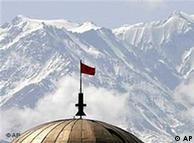 Those heady days in the early 1990s seemed full of possibility as countries whose leaders made no decisions without consulting their masters in Moscow could now take their destinies into their own hands.
Those heady days in the early 1990s seemed full of possibility as countries whose leaders made no decisions without consulting their masters in Moscow could now take their destinies into their own hands.
Even in the first half of this decade, a series of non-violent revolutions – color and otherwise – in Ukraine, Georgia, and Kyrgyzstan seemed to many to be the first in a series of transitions that would finally put Central Asia and the Caucasus on the path toward democracy.
But that is not the way it has turned out.
Central Asia today is largely seen as a collection of authoritarian states – only differing in the relative severity of the repression. The Caucasus comes off somewhat better, but only in comparison with the dire state of democratic development and human rights in countries like Turkmenistan or Uzbekistan.
"In fact, it's a pretty depressing story, the amount of decay in democratic institutions we've seen over the last four years," Bruce Pannier, who helped compile the 2009 report on Central Asia for the watchdog group Freedom House, told Deutsche Welle.
In that report, which measured progress in 2008, nearly every country in the region saw its rankings decline according to measurements the organization developed aimed to quantify democratization in different areas, including the development of civil society, independent media, elections and corruption.
Freedom House said it was the worst performance that the post-communist region had seen in the 13 years that the group has carried out the survey.
Some countries, such as Turkmenistan, have long been hermetically sealed off from the rest of the world. But Kyrgyzstan, which used to be an "island of democracy" and an example for other Central Asian states, joined for the first time the group of "consolidated authoritarian regimes," a club that includes most of the other post-Soviet Central Asian states along with Russia, Azerbaijan and Belarus.
Georgia, to the west, is one country that while not a bright spot, has a certain democratic glow to it. Even so, Freedom House says Georgia today is actually less democratic than in any period in the last ten years. Its rankings for governance, electoral process and civil society have all slipped since 2008 and the decline in press freedom has been a particularly worrying trend
full text >>>
 Those heady days in the early 1990s seemed full of possibility as countries whose leaders made no decisions without consulting their masters in Moscow could now take their destinies into their own hands.
Those heady days in the early 1990s seemed full of possibility as countries whose leaders made no decisions without consulting their masters in Moscow could now take their destinies into their own hands.Even in the first half of this decade, a series of non-violent revolutions – color and otherwise – in Ukraine, Georgia, and Kyrgyzstan seemed to many to be the first in a series of transitions that would finally put Central Asia and the Caucasus on the path toward democracy.
But that is not the way it has turned out.
Central Asia today is largely seen as a collection of authoritarian states – only differing in the relative severity of the repression. The Caucasus comes off somewhat better, but only in comparison with the dire state of democratic development and human rights in countries like Turkmenistan or Uzbekistan.
"In fact, it's a pretty depressing story, the amount of decay in democratic institutions we've seen over the last four years," Bruce Pannier, who helped compile the 2009 report on Central Asia for the watchdog group Freedom House, told Deutsche Welle.
In that report, which measured progress in 2008, nearly every country in the region saw its rankings decline according to measurements the organization developed aimed to quantify democratization in different areas, including the development of civil society, independent media, elections and corruption.
Freedom House said it was the worst performance that the post-communist region had seen in the 13 years that the group has carried out the survey.
Some countries, such as Turkmenistan, have long been hermetically sealed off from the rest of the world. But Kyrgyzstan, which used to be an "island of democracy" and an example for other Central Asian states, joined for the first time the group of "consolidated authoritarian regimes," a club that includes most of the other post-Soviet Central Asian states along with Russia, Azerbaijan and Belarus.
Georgia, to the west, is one country that while not a bright spot, has a certain democratic glow to it. Even so, Freedom House says Georgia today is actually less democratic than in any period in the last ten years. Its rankings for governance, electoral process and civil society have all slipped since 2008 and the decline in press freedom has been a particularly worrying trend
full text >>>
Labels:
Central Asia,
Europa,
Geopolitic,
Georgia,
Politics,
USA
KONZERT: Katie Melua: Tour 2010 (welt-musik.net)
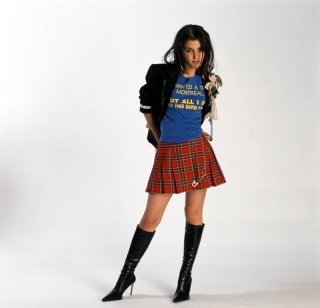 Von vielen Fans auf der ganzen Welt wird das neue Album der vielfach ausgezeichneten Künstlerin KATIE MELUA sehnsüchtig erwartet. Momentan arbeitet die aus Georgien stammende Britin im Studio u.a. mit dem Produzenten William Orbit an der Fertigstellung ihres vierten Studioalbums, welches im Mai 2010 veröffentlicht werden soll. Darüber hinaus entstehen Katie’s neue Songs gemeinsam mit namhaften Songwritern wie Guy Chambers und Rick Nowles.
Von vielen Fans auf der ganzen Welt wird das neue Album der vielfach ausgezeichneten Künstlerin KATIE MELUA sehnsüchtig erwartet. Momentan arbeitet die aus Georgien stammende Britin im Studio u.a. mit dem Produzenten William Orbit an der Fertigstellung ihres vierten Studioalbums, welches im Mai 2010 veröffentlicht werden soll. Darüber hinaus entstehen Katie’s neue Songs gemeinsam mit namhaften Songwritern wie Guy Chambers und Rick Nowles.Mike Batt, Katies Entdecker, Manager und Produzent ihrer ersten drei Alben, dazu: "William und Katie haben eine großartige Zeit im Studio und alle Beteiligten sind über diese Zusammenarbeit begeistert. Das Material was sie alleine und auch mit Guy, Rick und anderen geschrieben hat ist fantastisch und repräsentiert erneut einen faszinierenden Entwicklungsschritt".
Katie sagt: "Wir haben alle bei der Arbeit im Studio unglaublich viel Spaß. Für die Aufnahmen arbeiteten wir mit meiner Band, die mich auch wieder auf der Tour begleiten wird. Es sind so großartige Musiker und ich bin stolz die Unterstützung all dieser wunderbaren Freunde zu haben."
Im Herbst 2010 geht Katie dann mit ihren neuen (und alten) Songs auf Europatournee. Mit ihren Live Shows reißt sie ihre Zuhörer immer wieder zu Begeisterungsstürmen hin. Ohne wahnwitzige Showeffekte fasziniert die Künstlerin ihre Zuschauer mit ihrer eindrucksvollen Stimme und ihrer bezaubernden Ausstrahlung. Auf unvergleichliche Weise gelingt es ihr selbst die größten Hallen in geradezu intime Musikclubs zu verwandeln.
TOUR 2010 in Germany
28.10.2010 Braunschweig – VW Halle
28.10.2010 Braunschweig – VW Halle
29.10.2010 München – Philharmonie
01.11.2010 Hamburg – Color Line Arena
02.11.2010 Köln – Lanxess Arena
03.11.2010 Nürnberg – Arena
05.11.2010 Dresden – Messe
06.11.2010 Berlin – O2 Arena
07.11.2010 Mannheim – SAP Arena
Links:
Labels:
Concert,
Georgian,
Germany,
Katie Melua,
Music
Monday, December 21, 2009
PHOTOGRAPHY: Mafgroup is the artistic union of innovative artists and professional photographers in Georgia (mafgroup.wordpress.com)
This is the first generation of artists who get the professional education in the field of photography – October 2001 CCCD established the Caucasian Institute of Photography and New Media in Tbilisi. The Institute was located in the Carvasla, but from March 2006 integrated in Tbilisi State Academy of Arts, with the name – Institute of Optical Imaging.
mafgroup.wordpress.com
mafgroup.wordpress.com
Labels:
Academic,
Georgia,
Photographer,
Photography,
Tbilisi
Subscribe to:
Posts (Atom)
